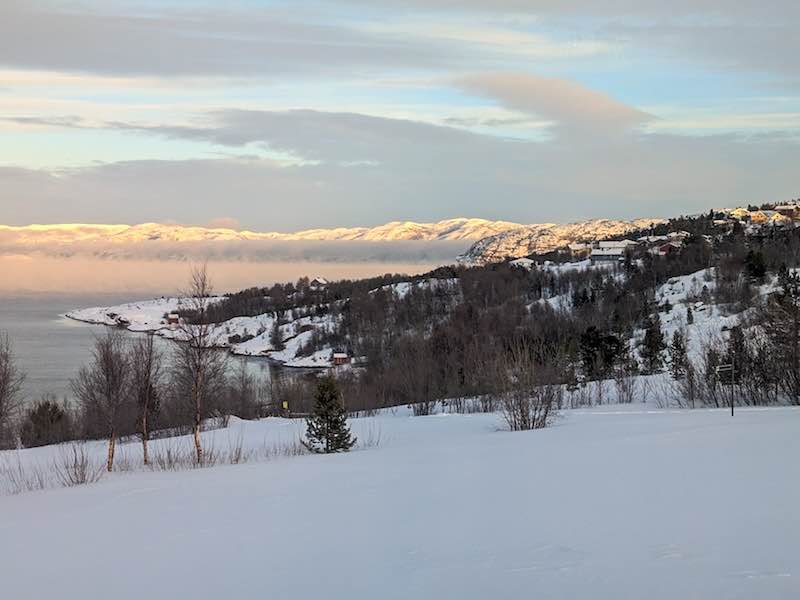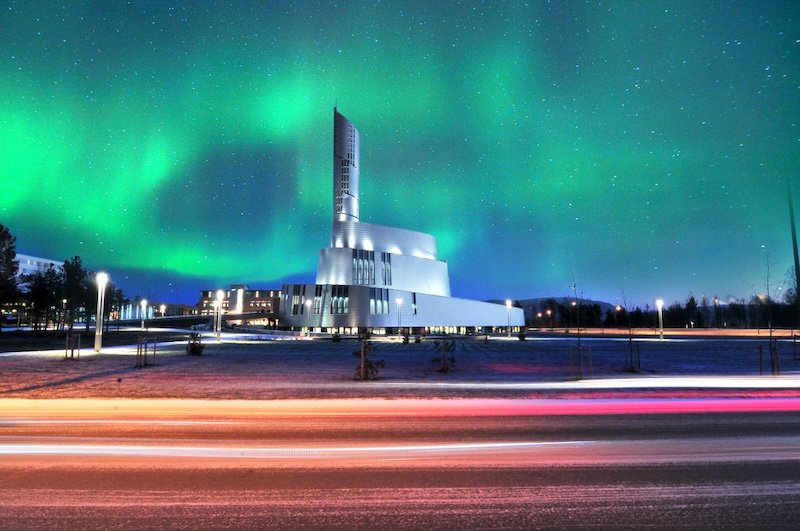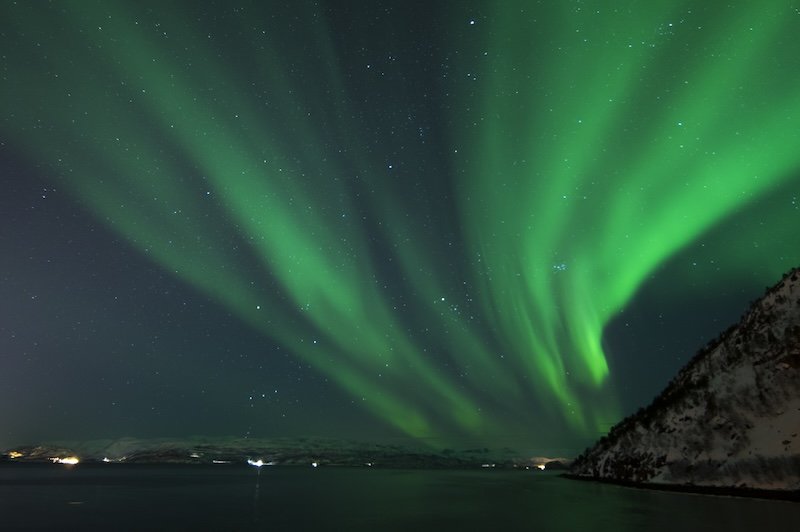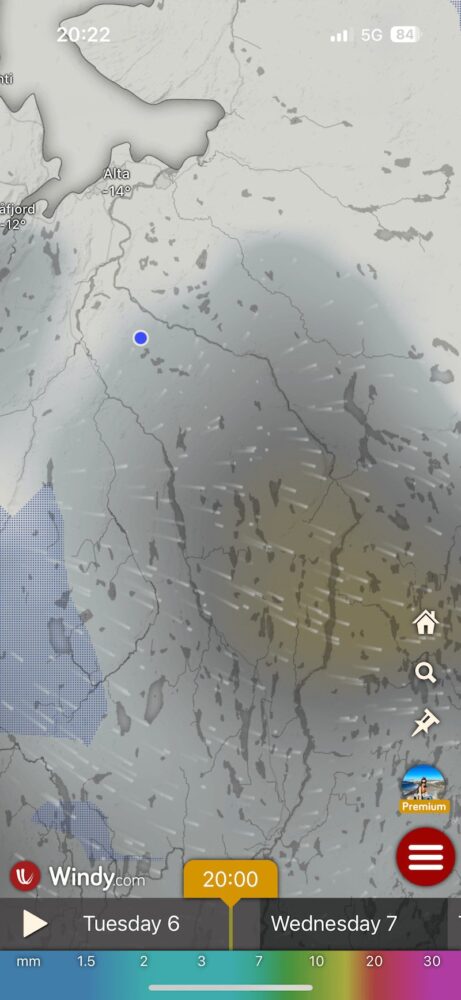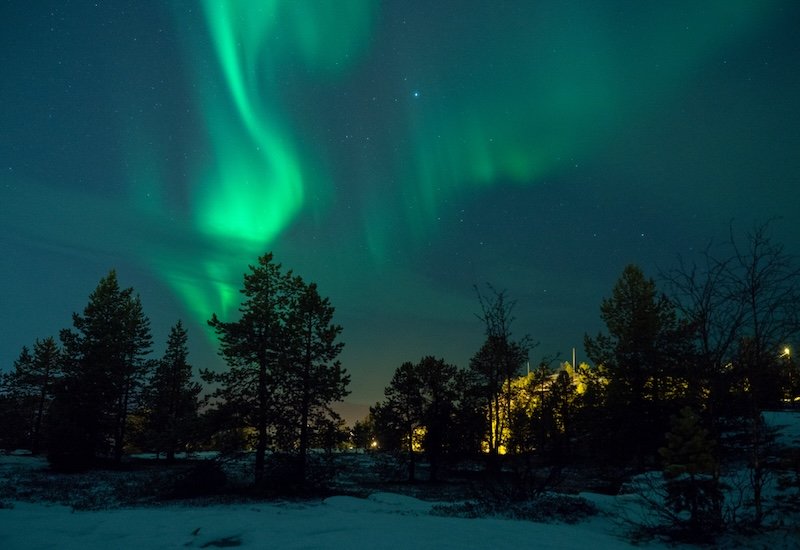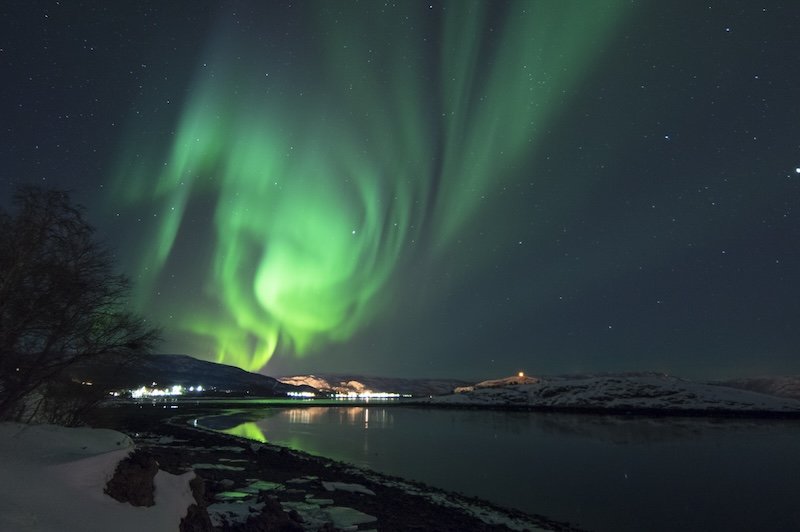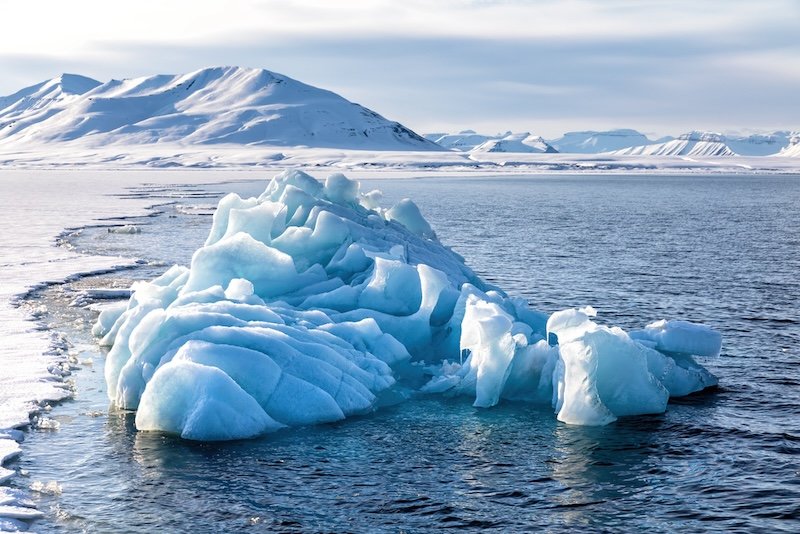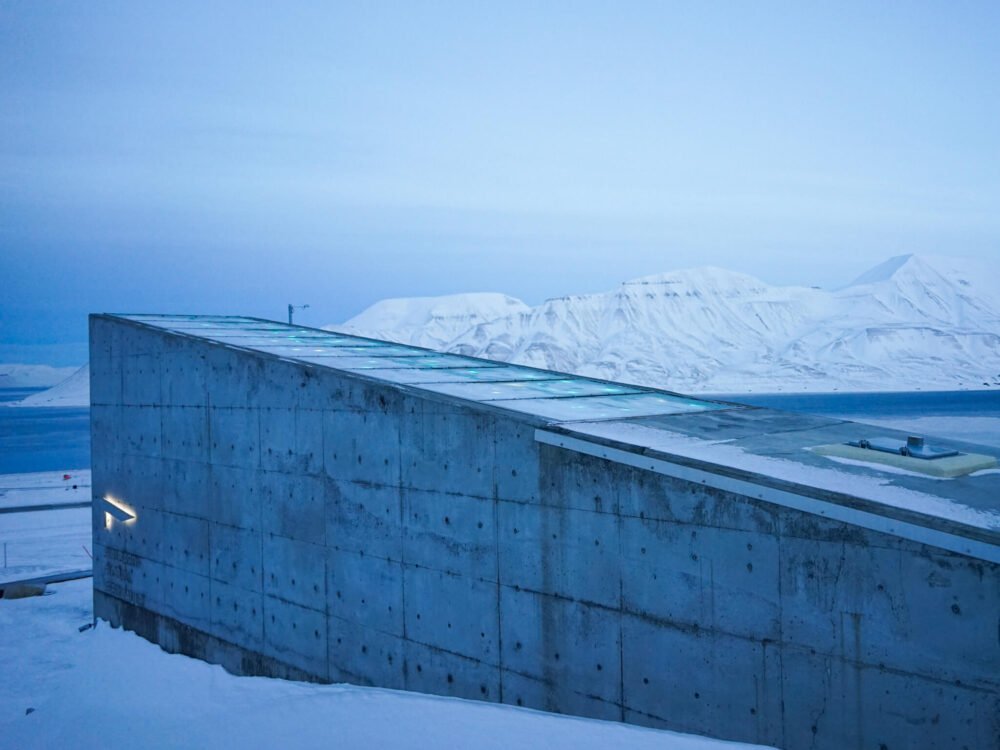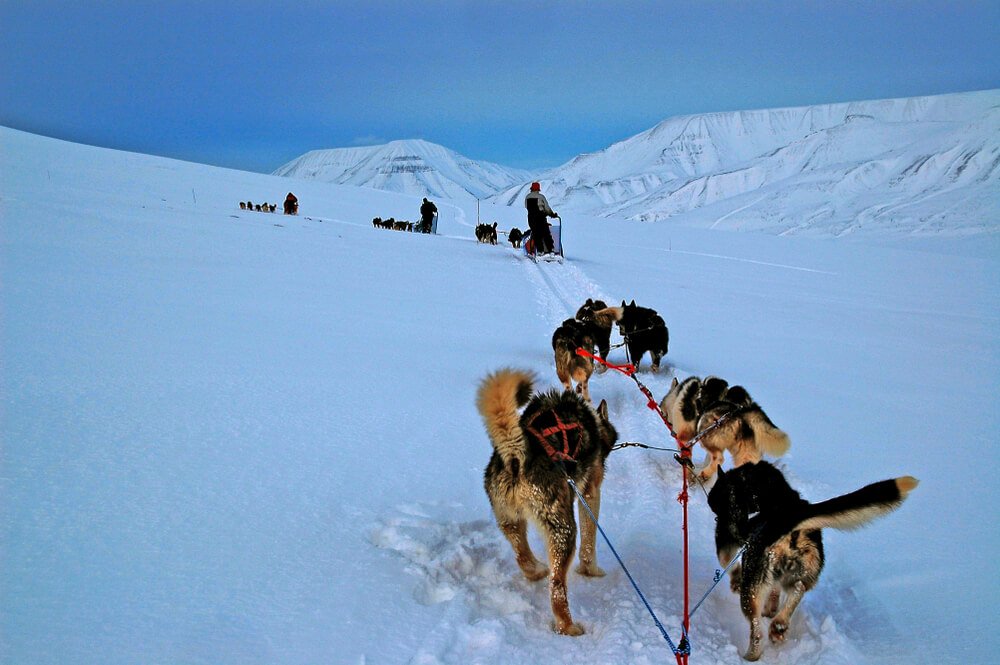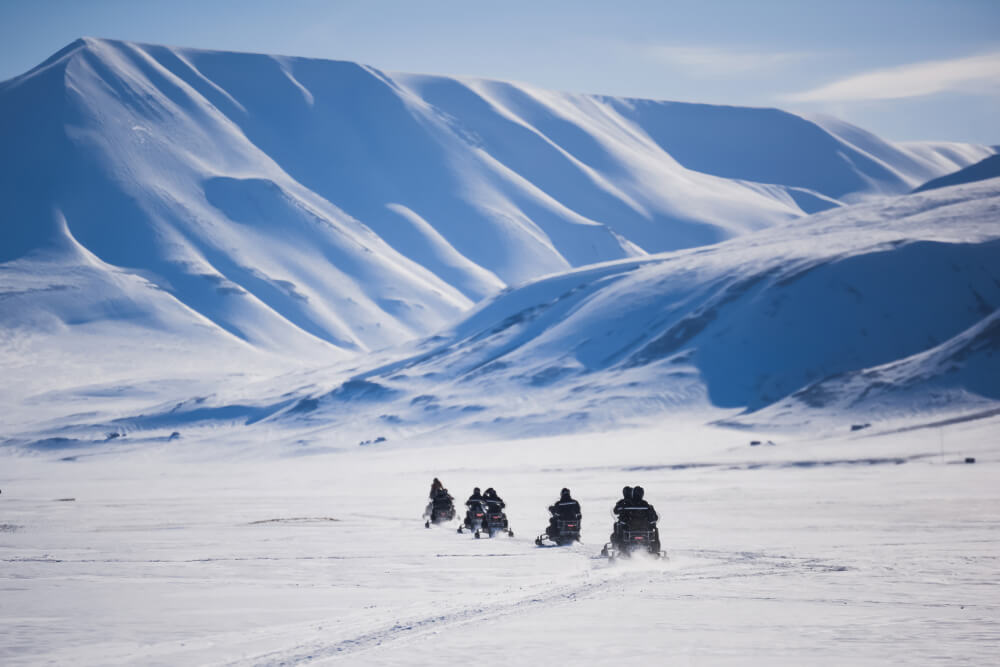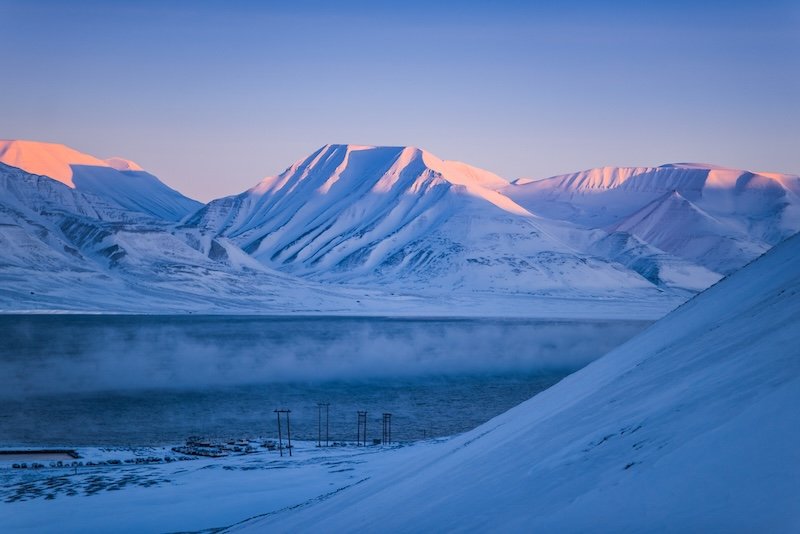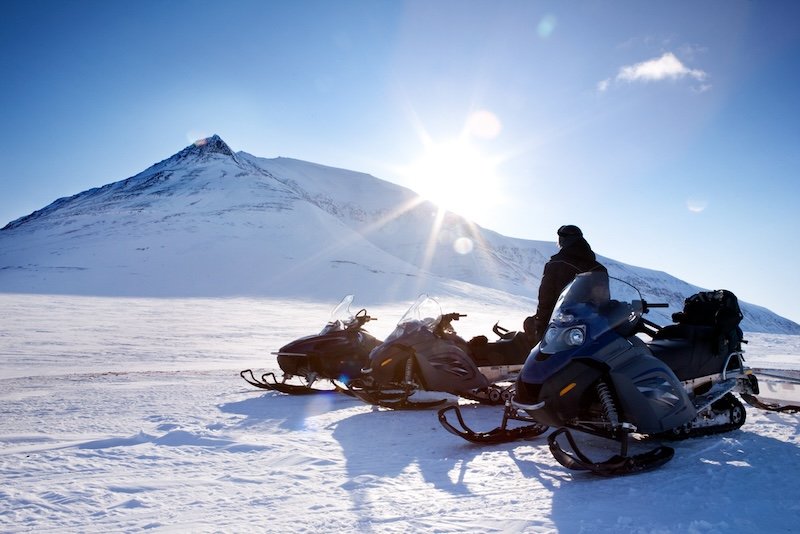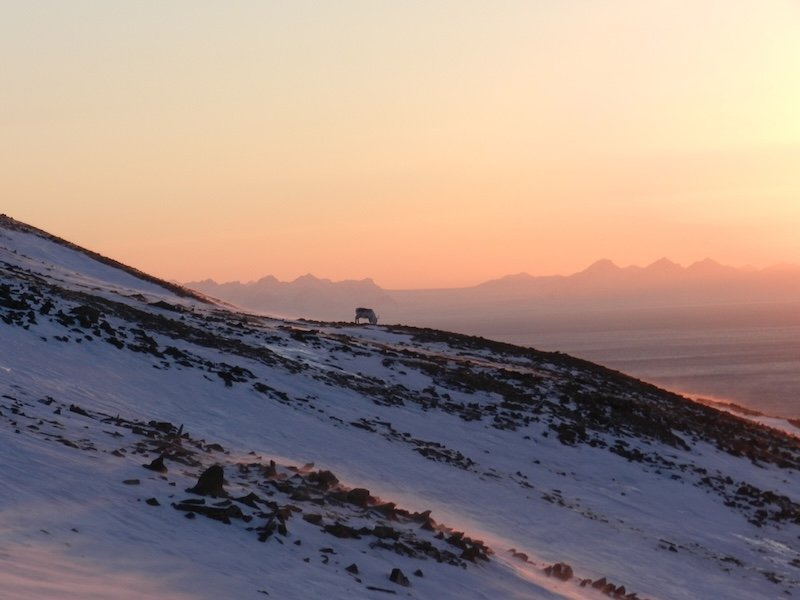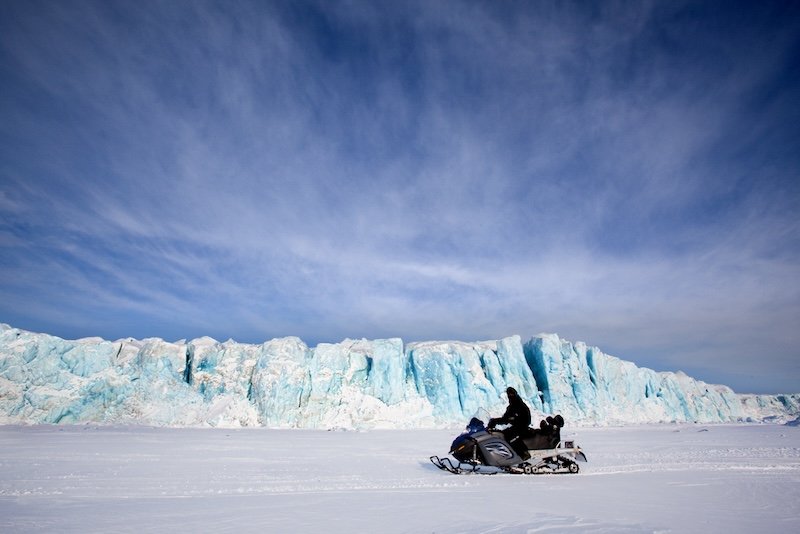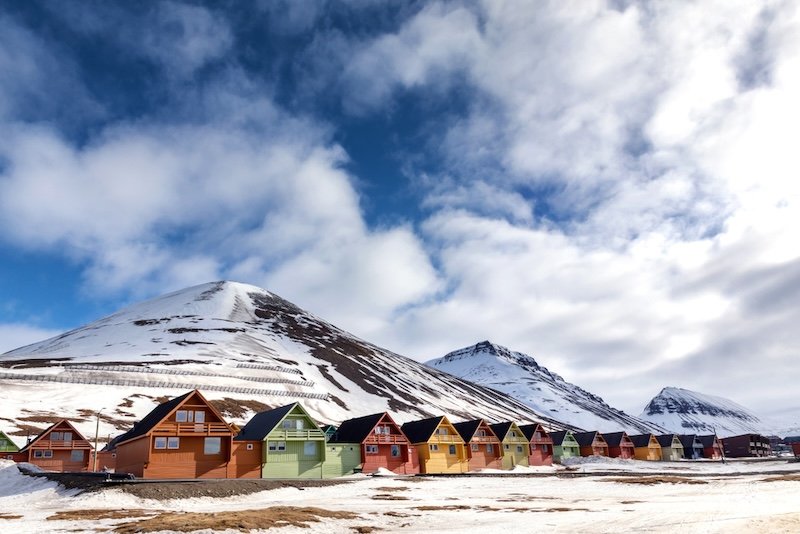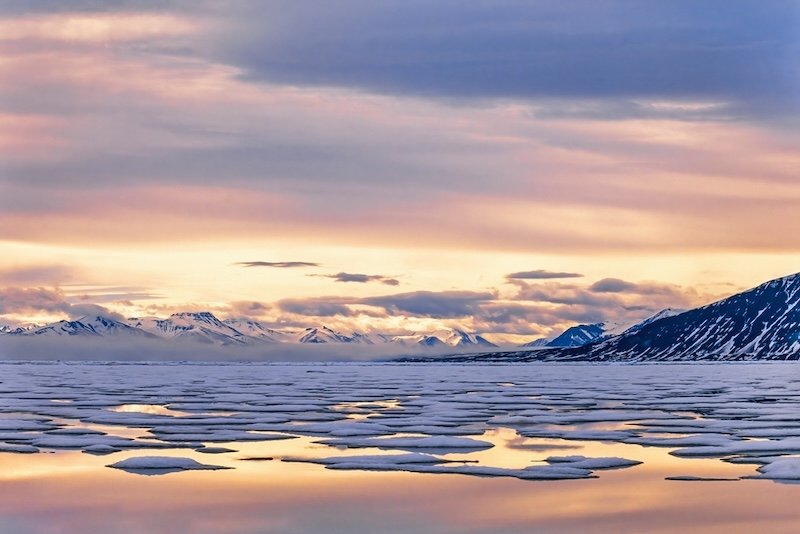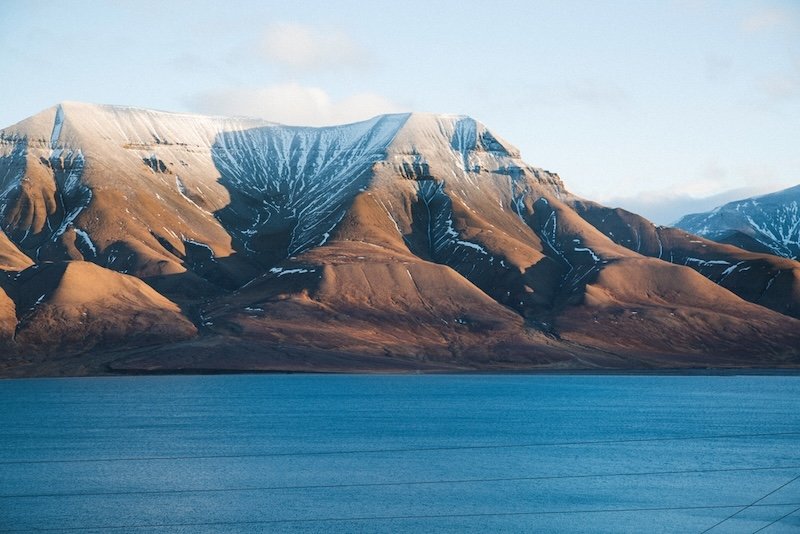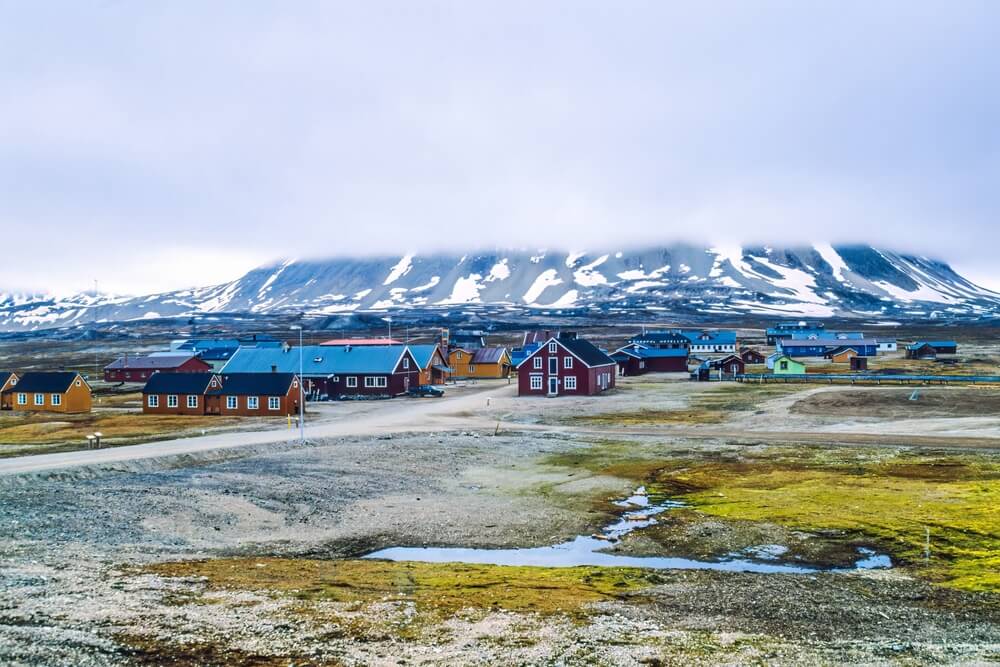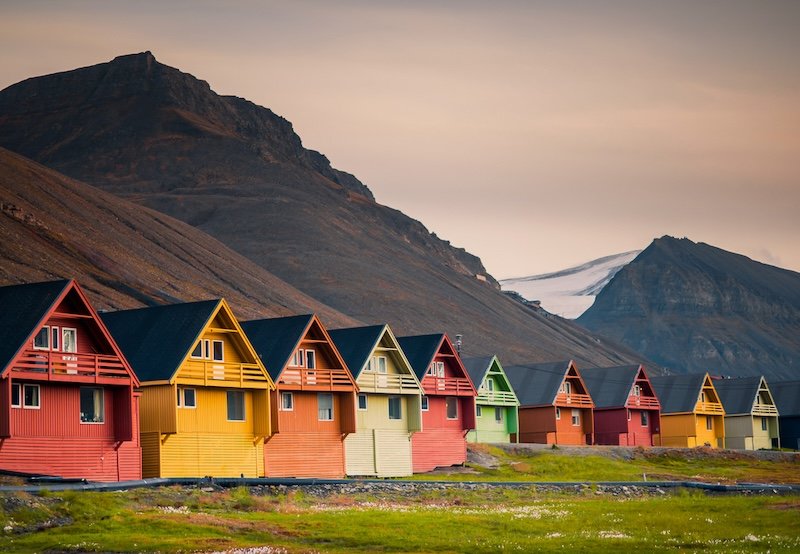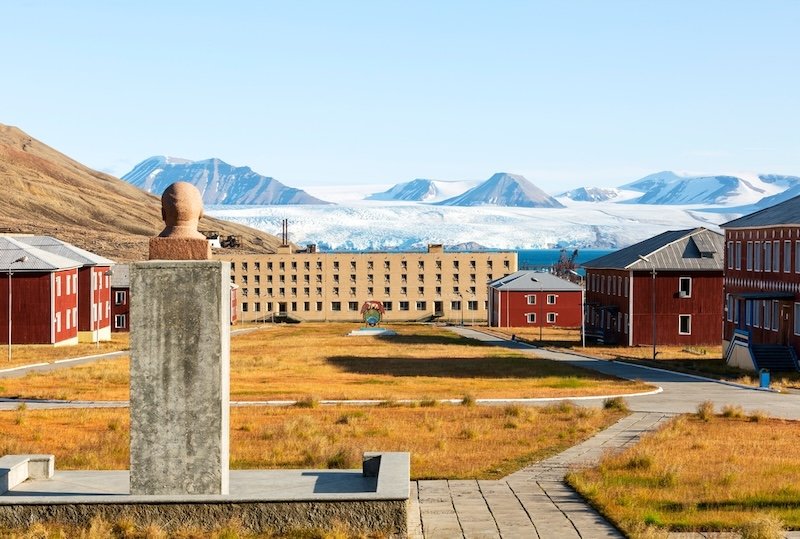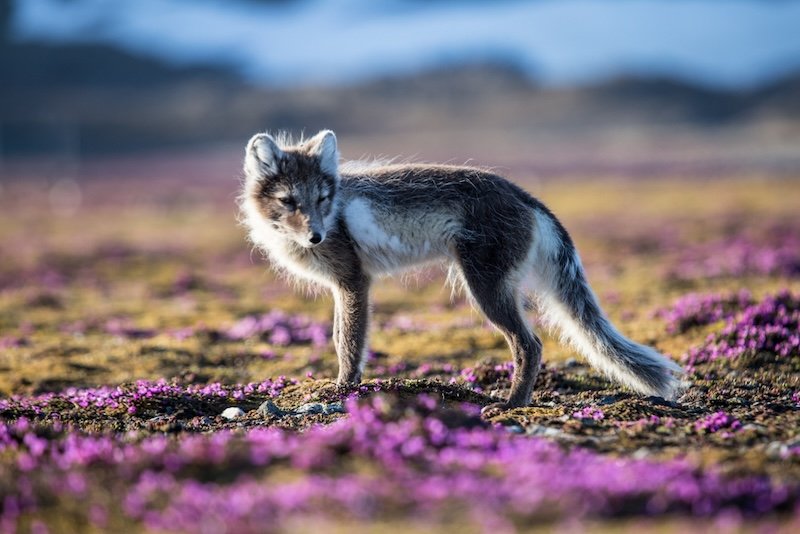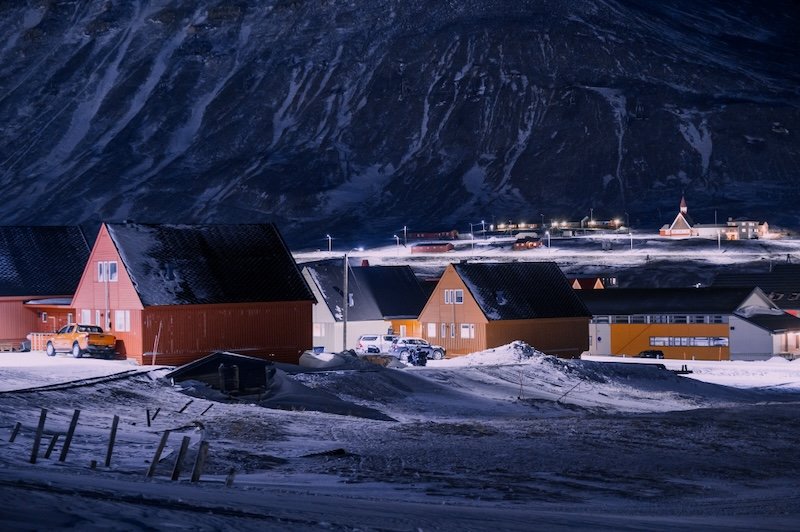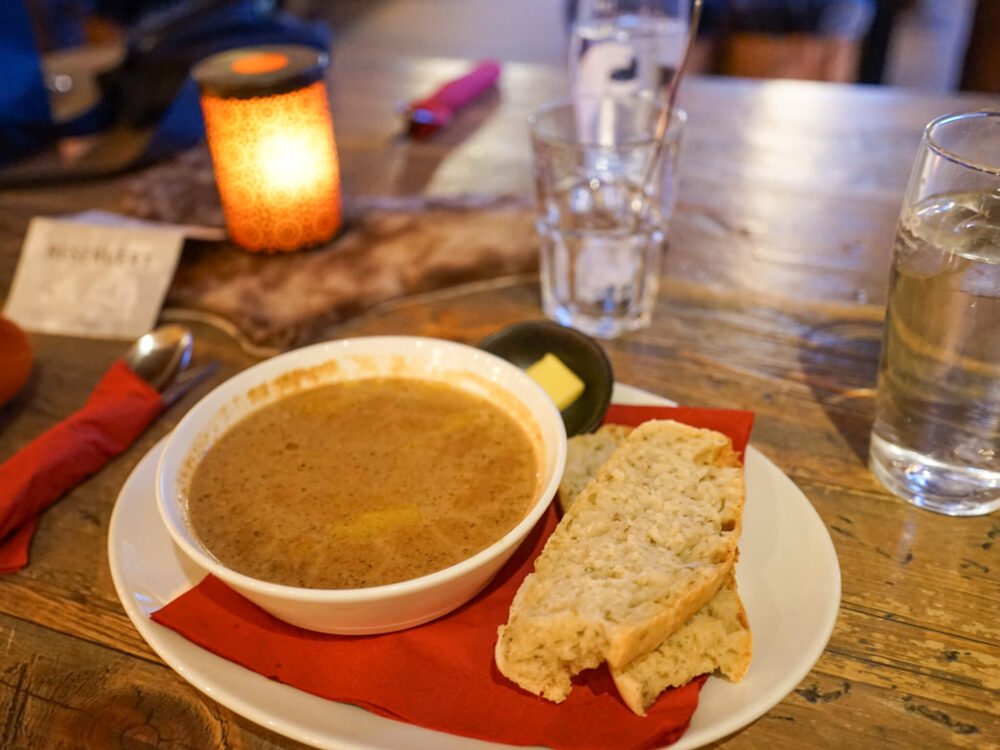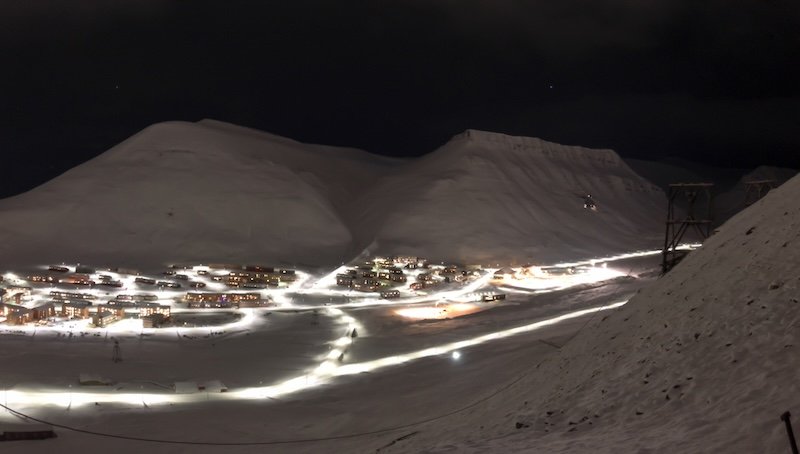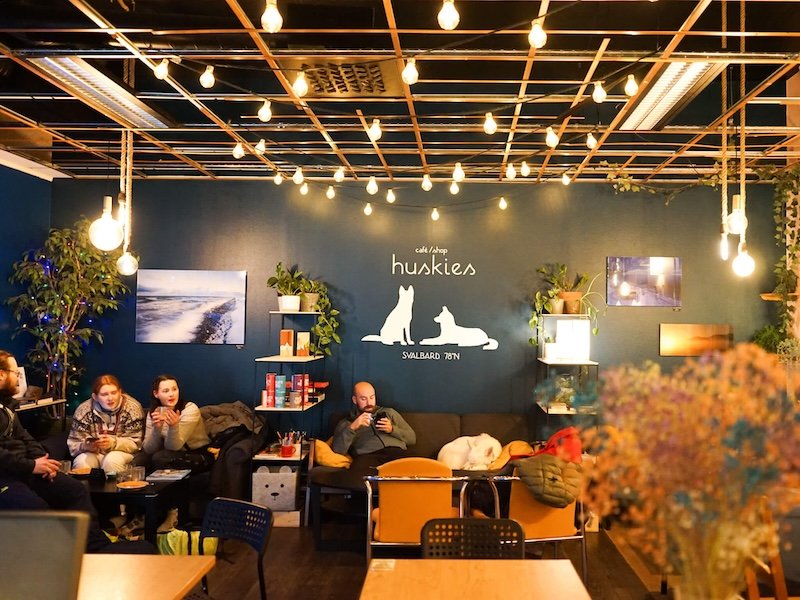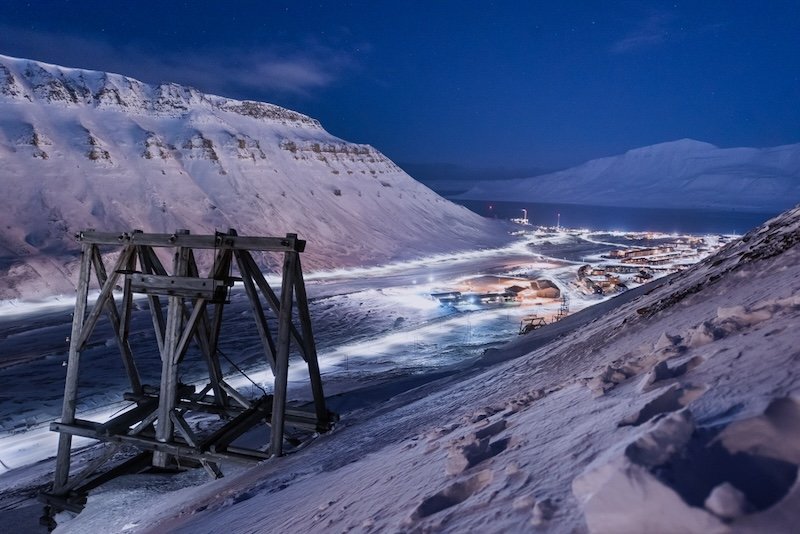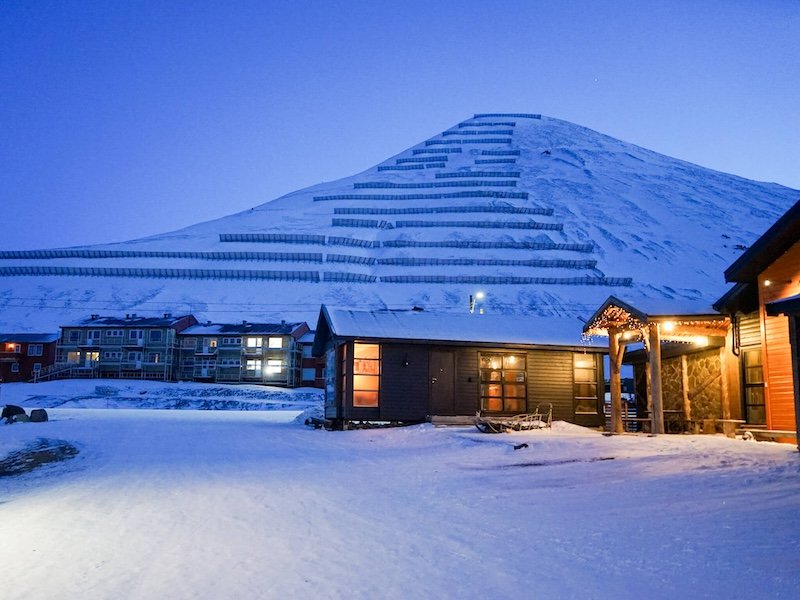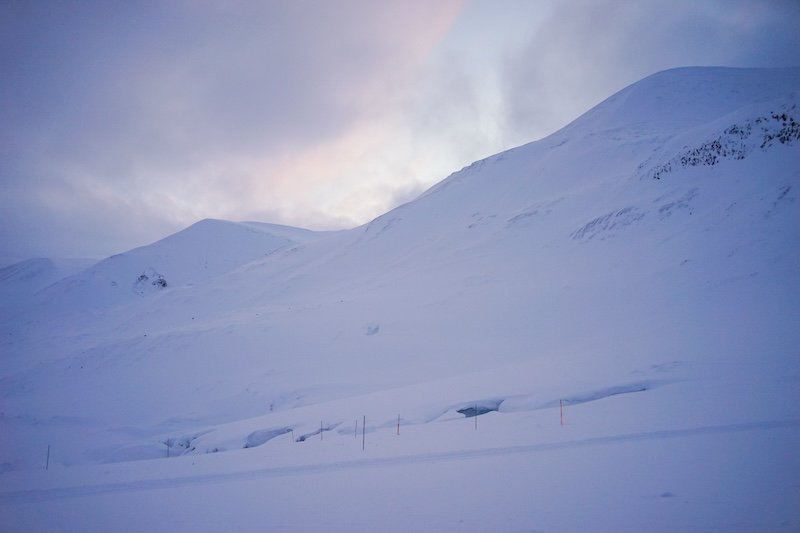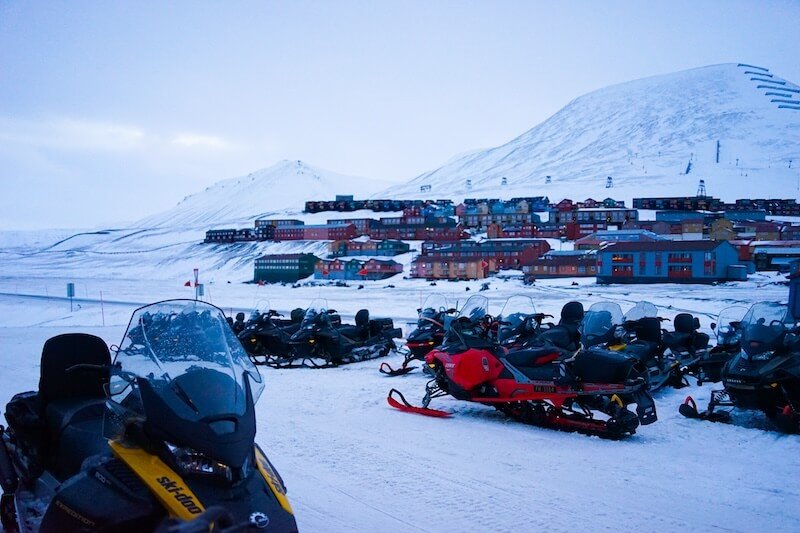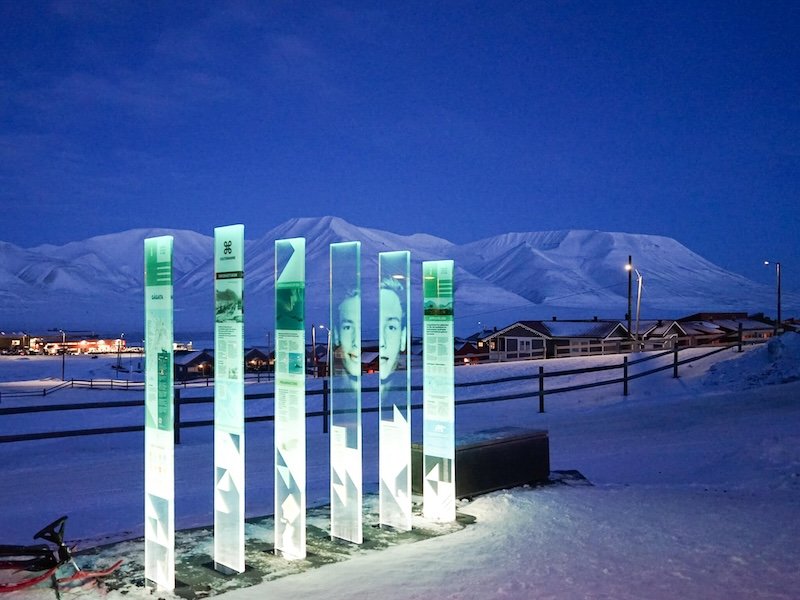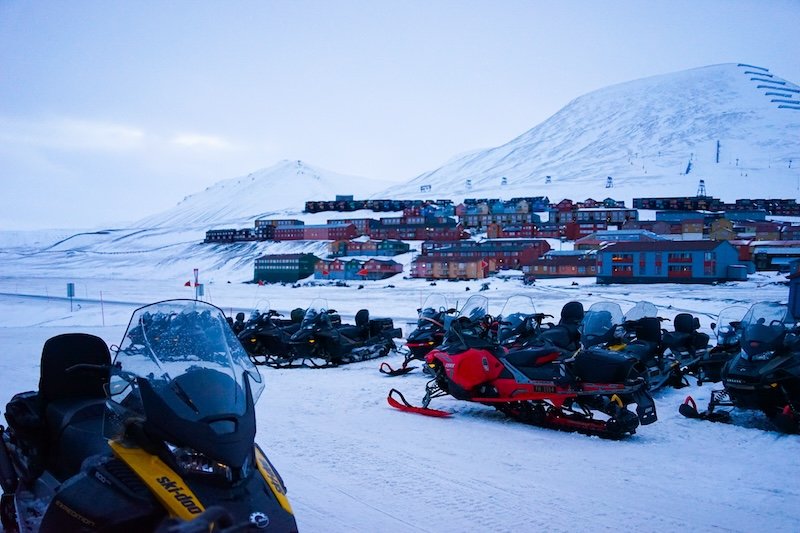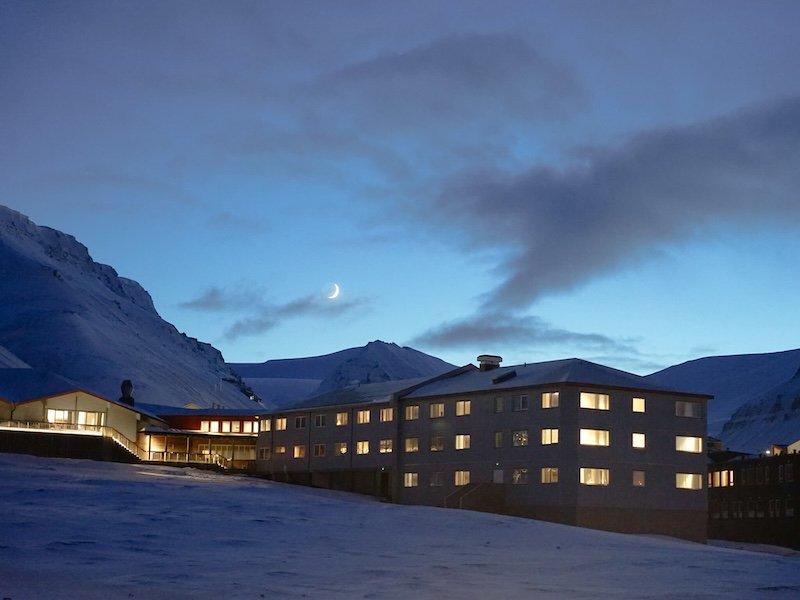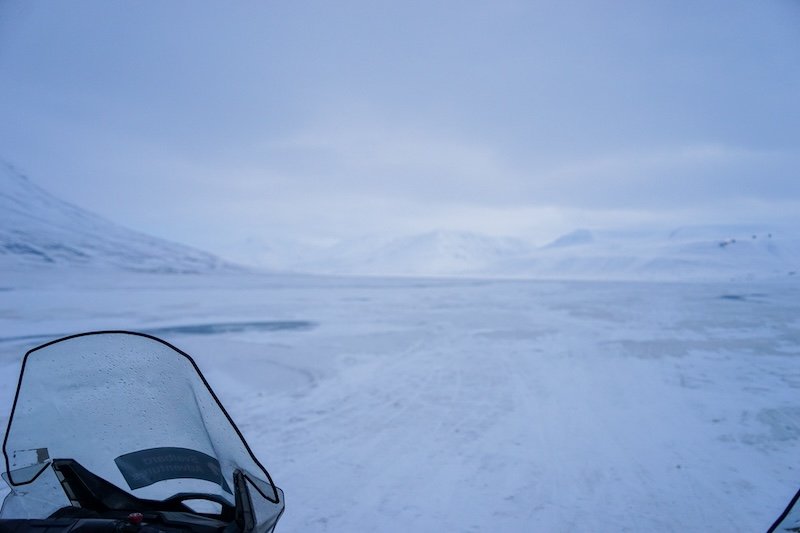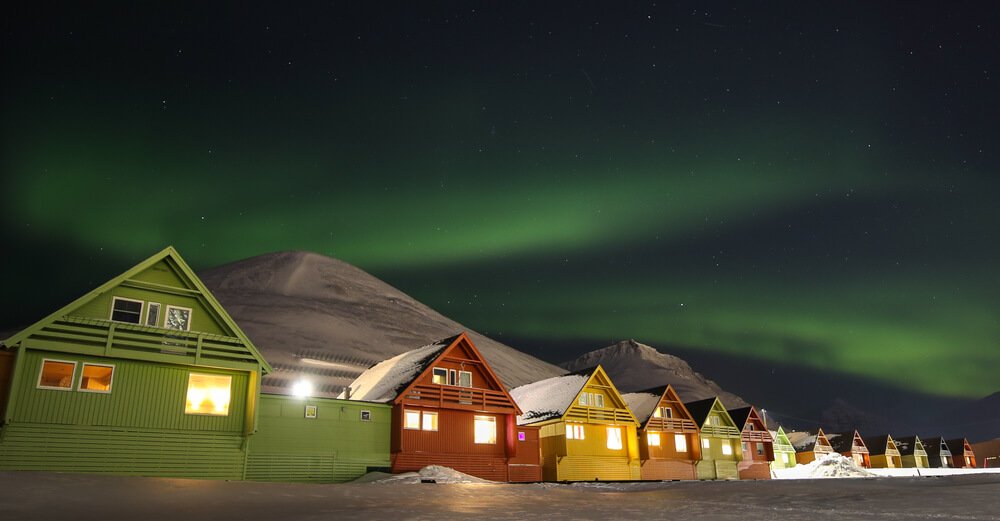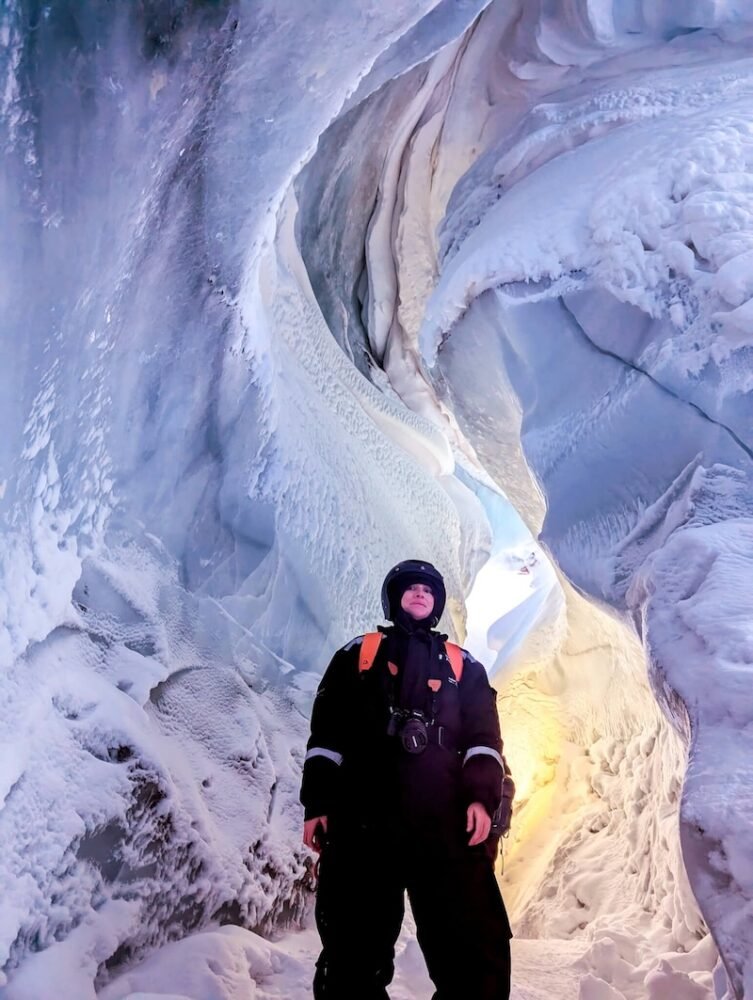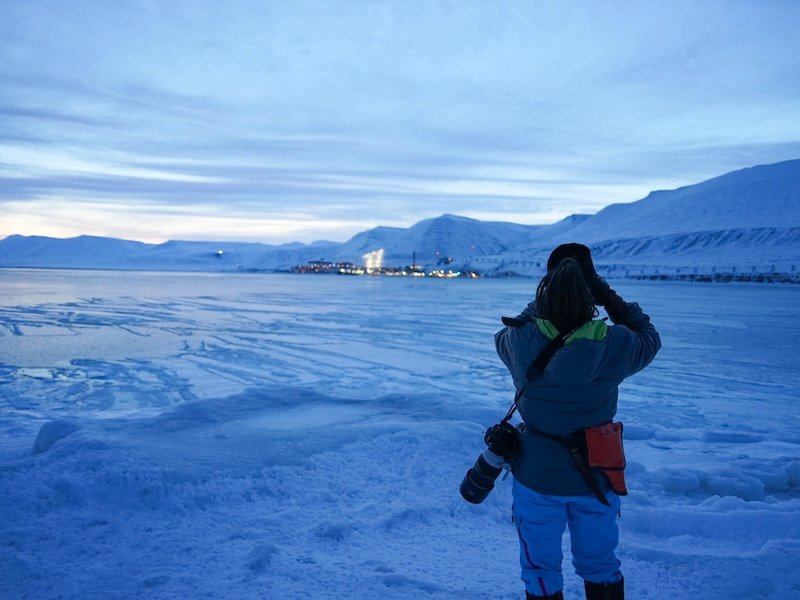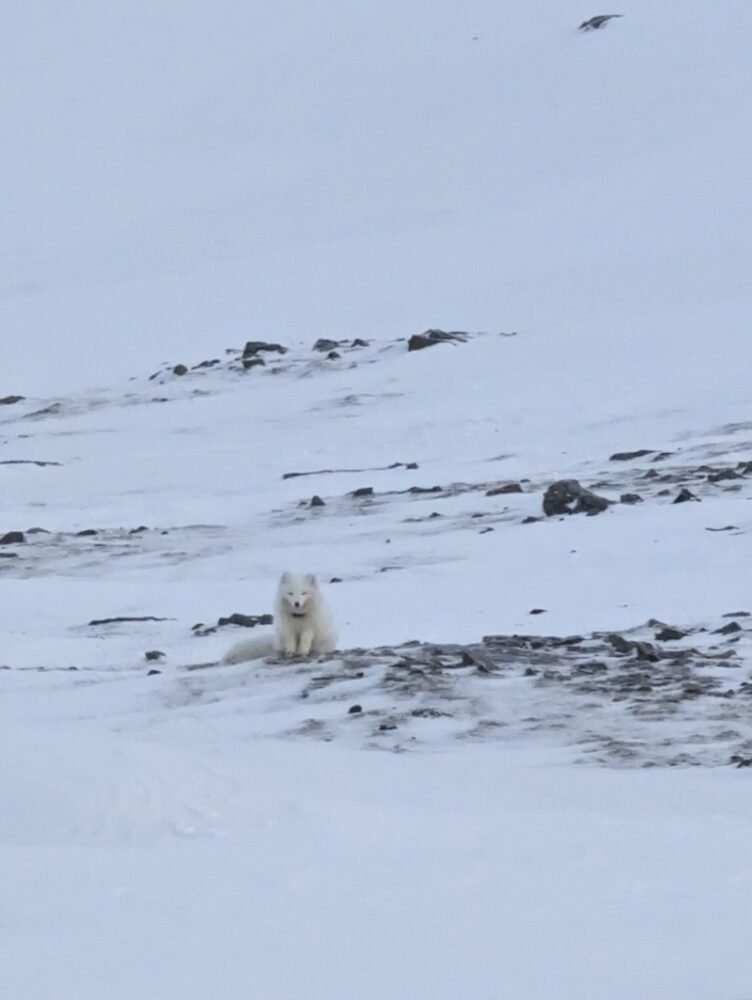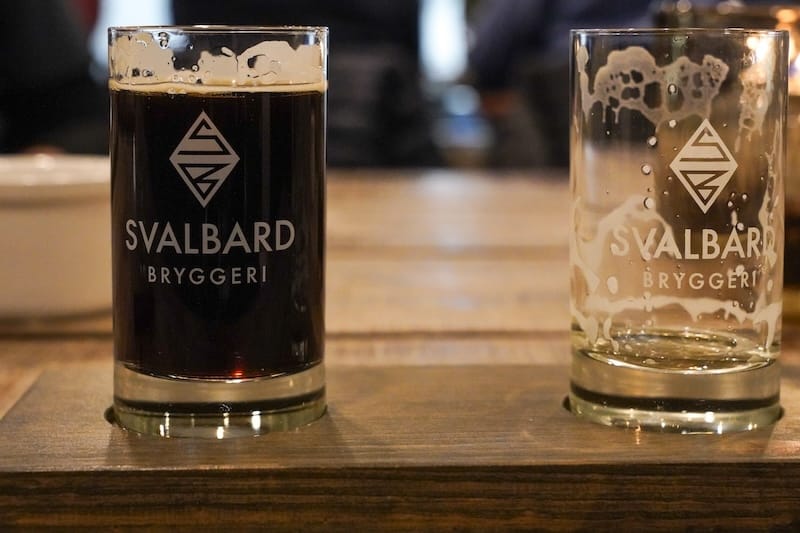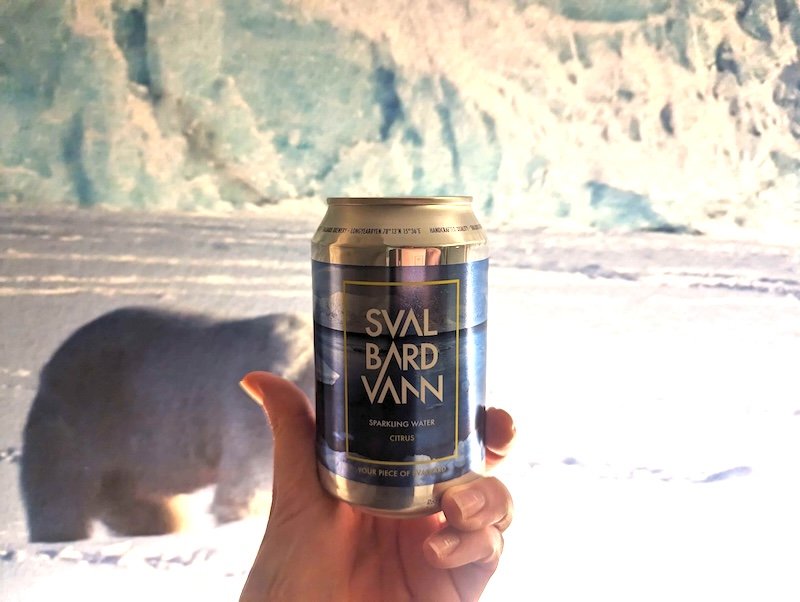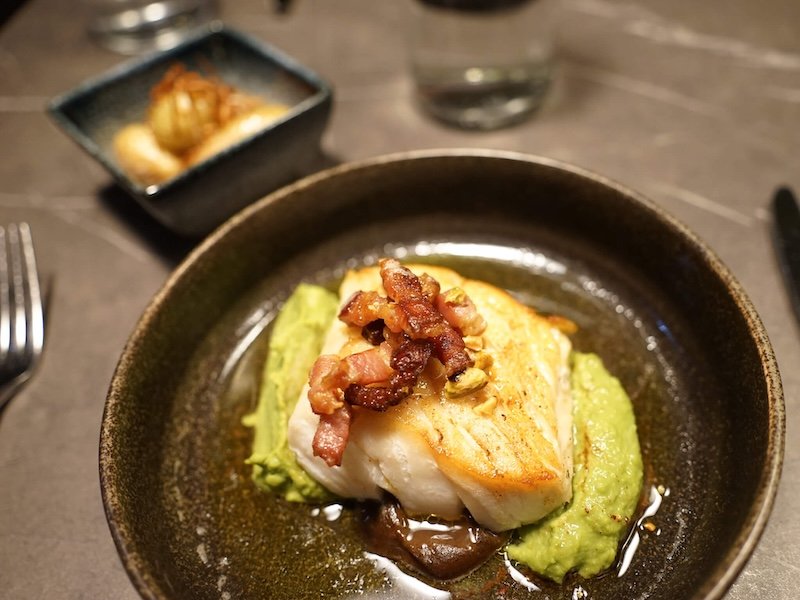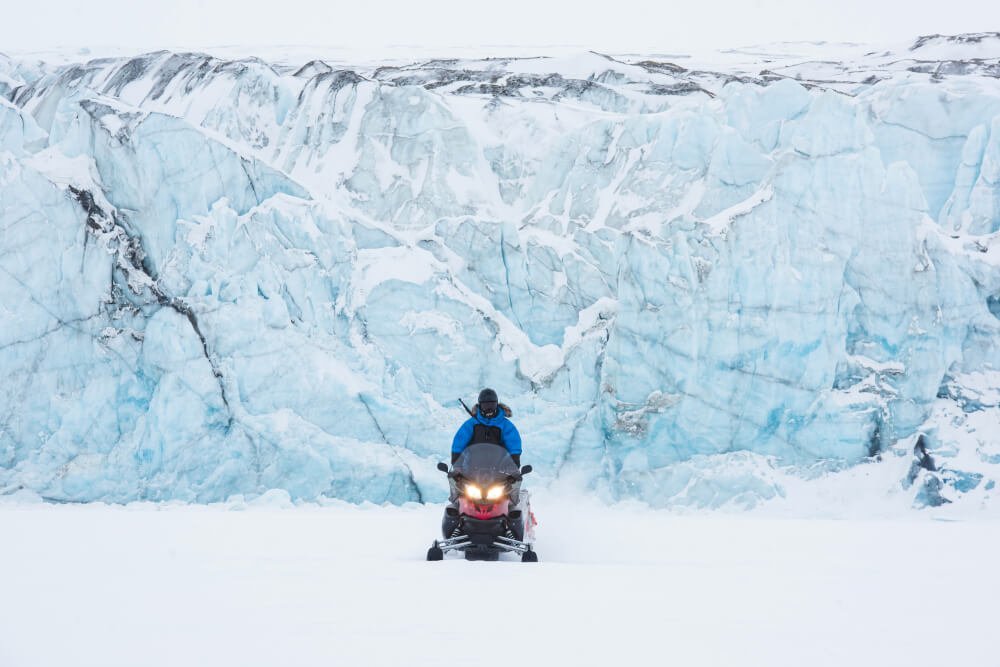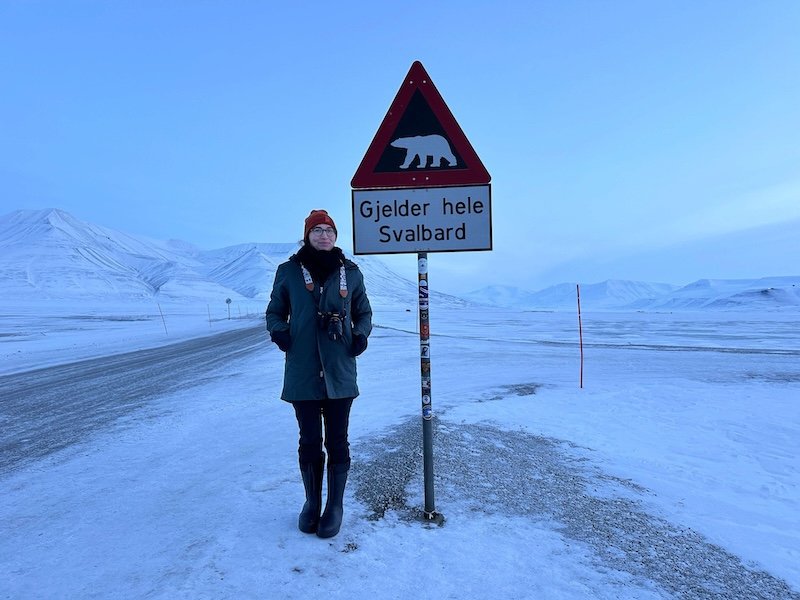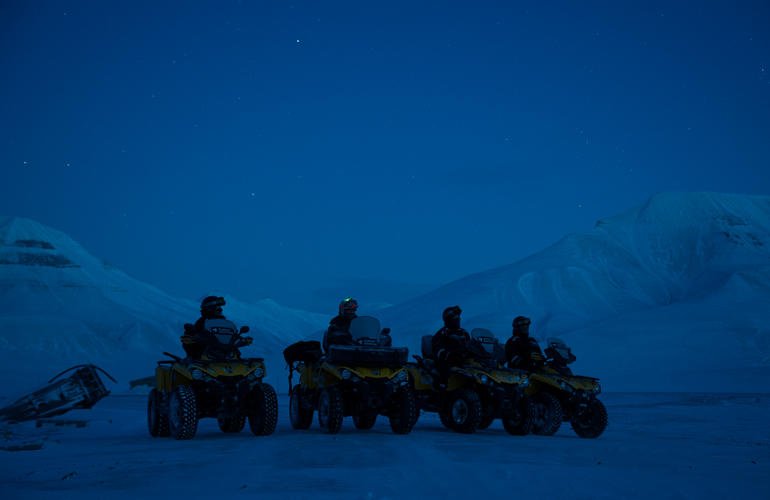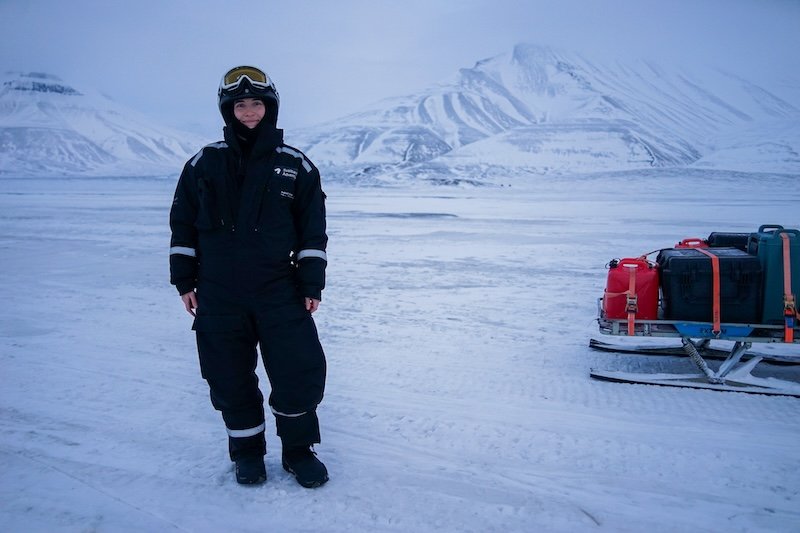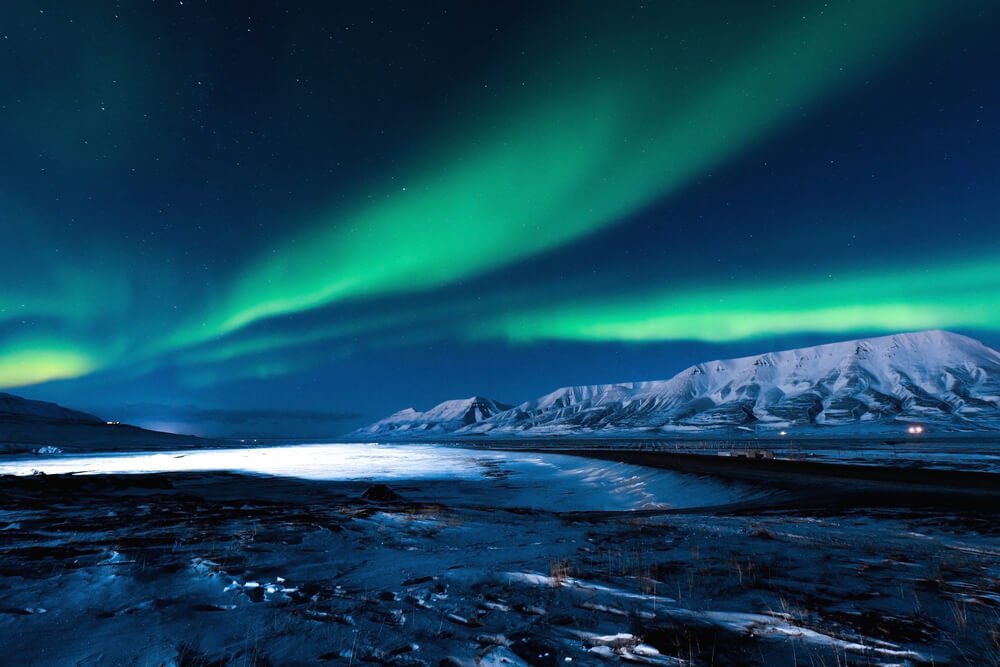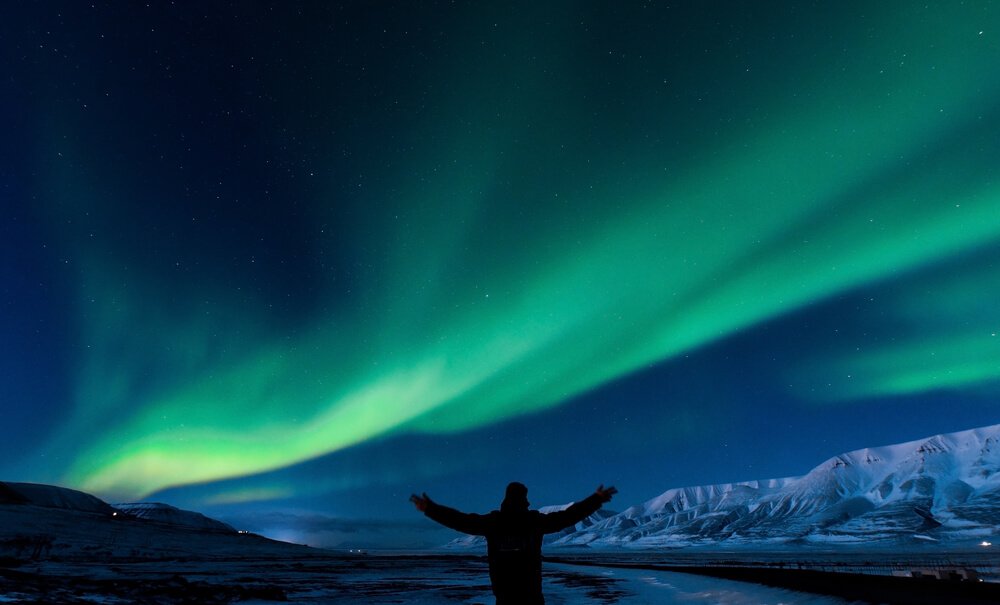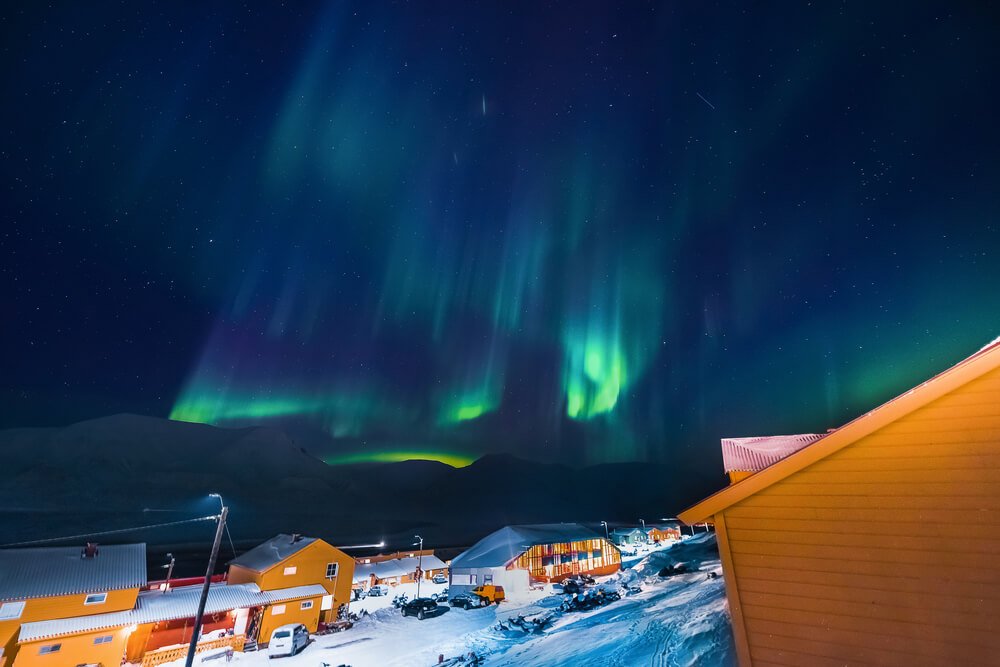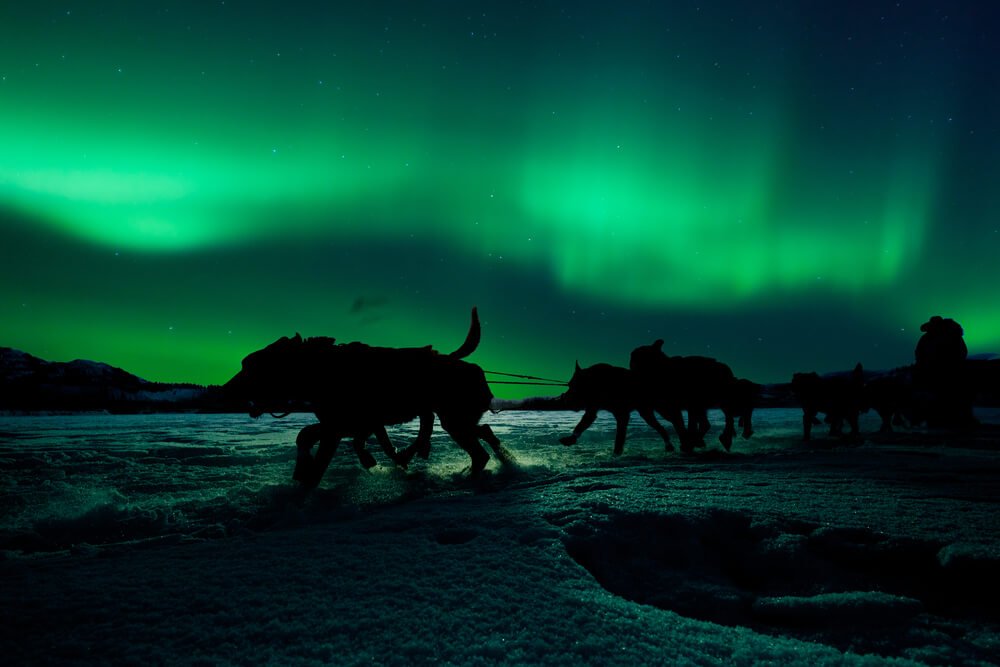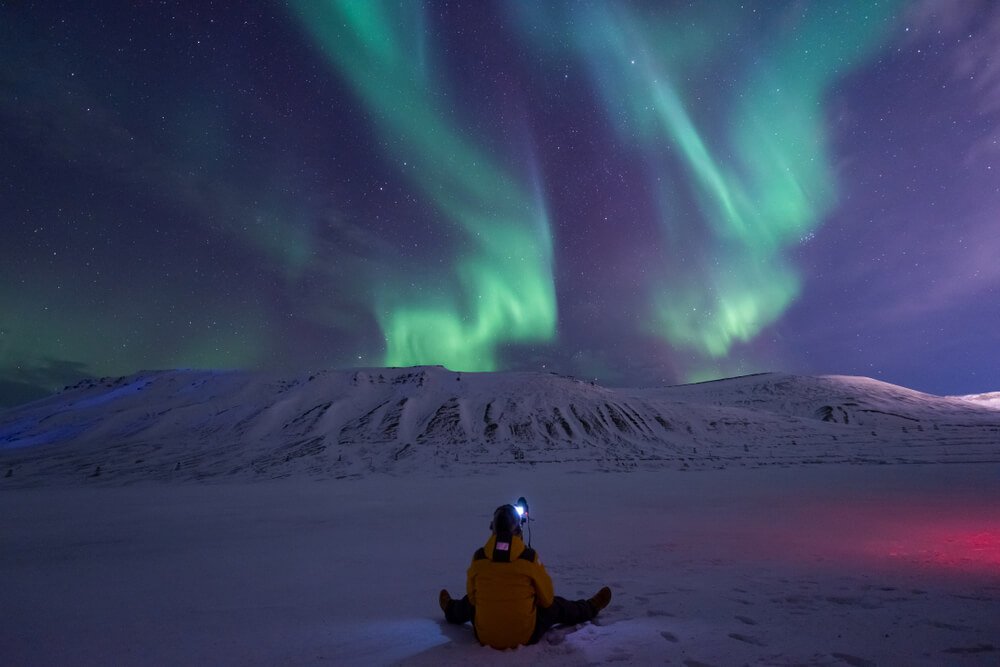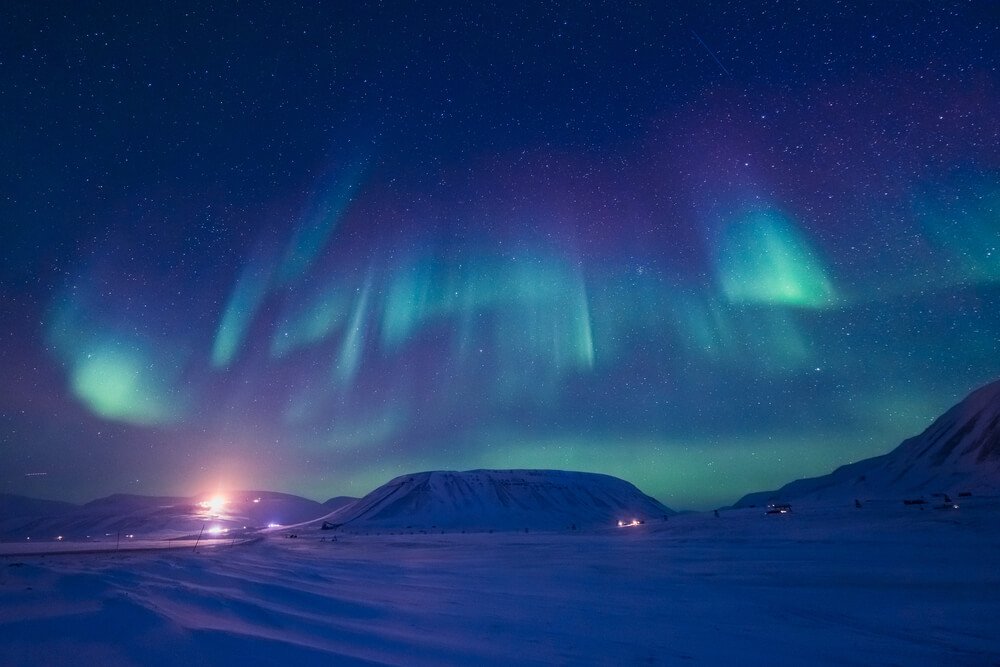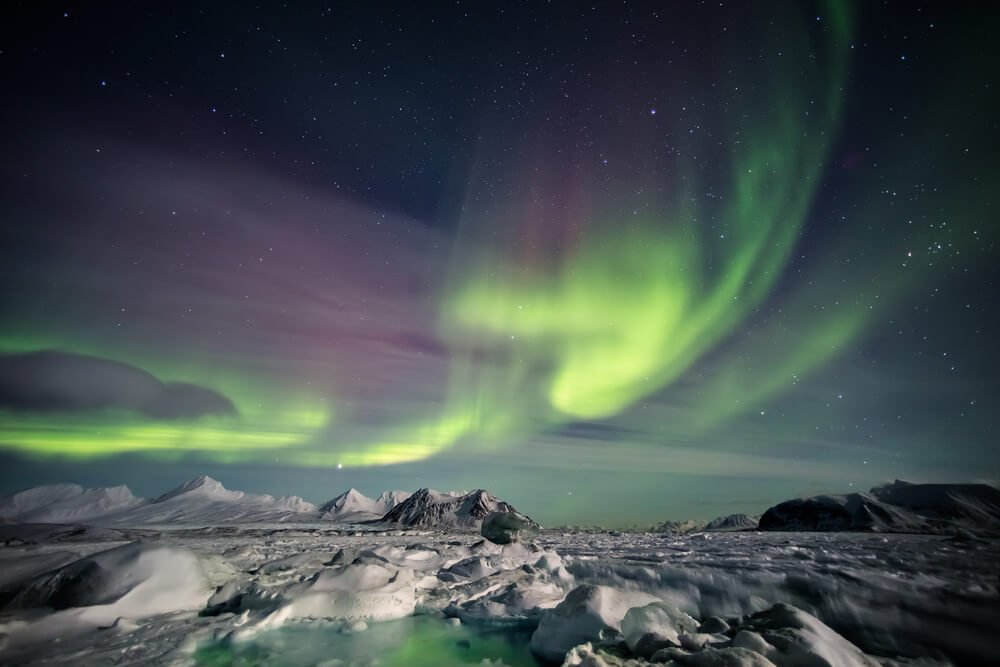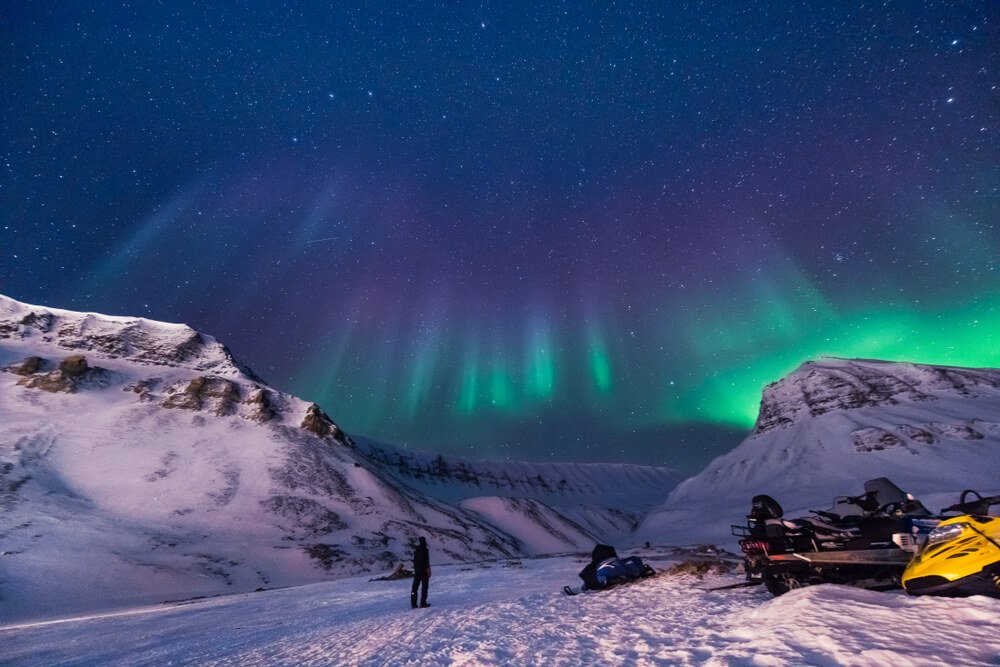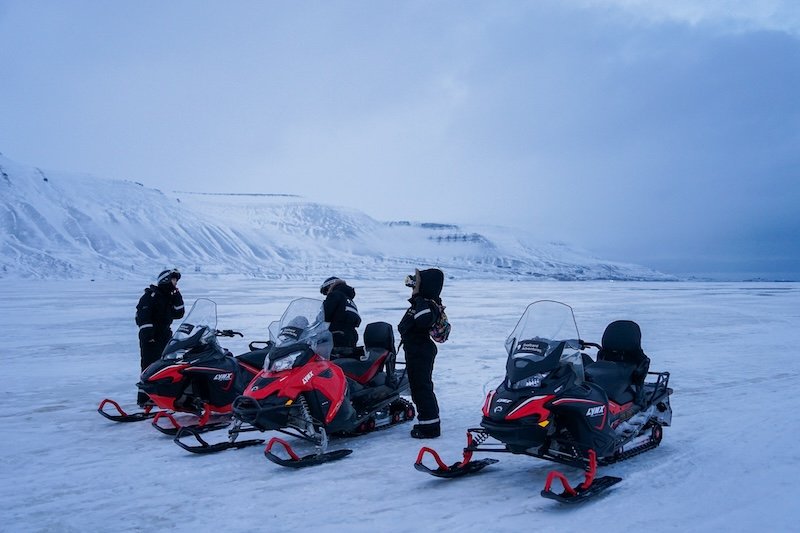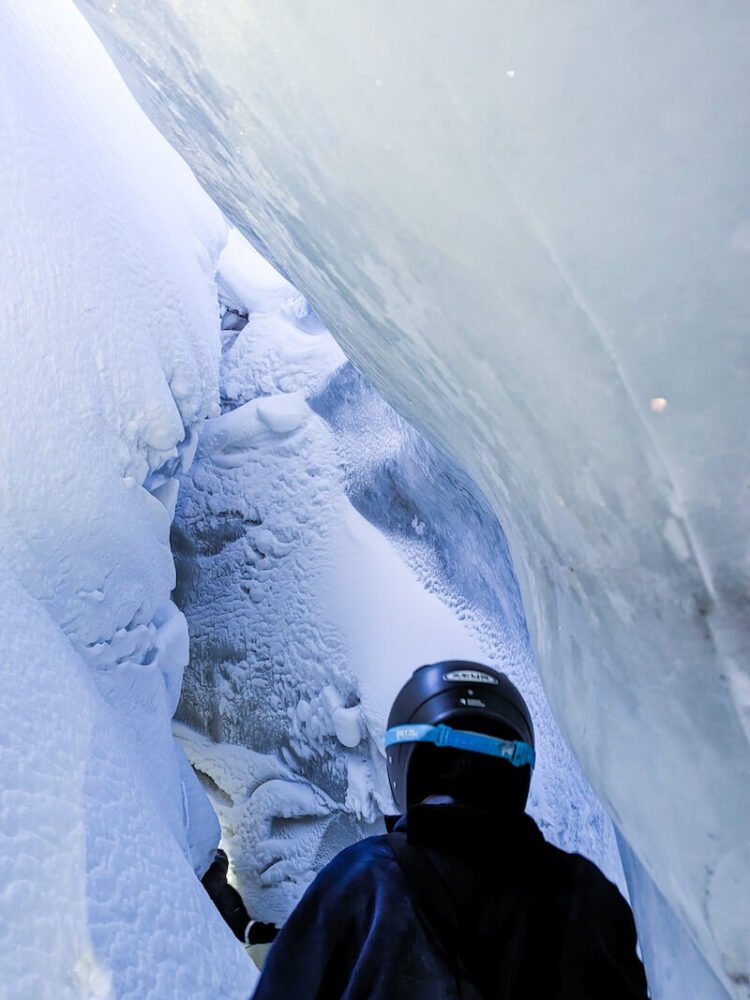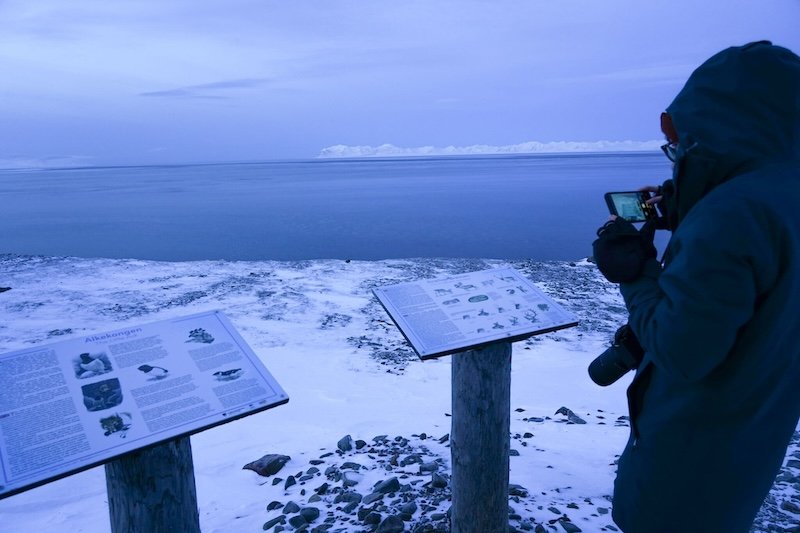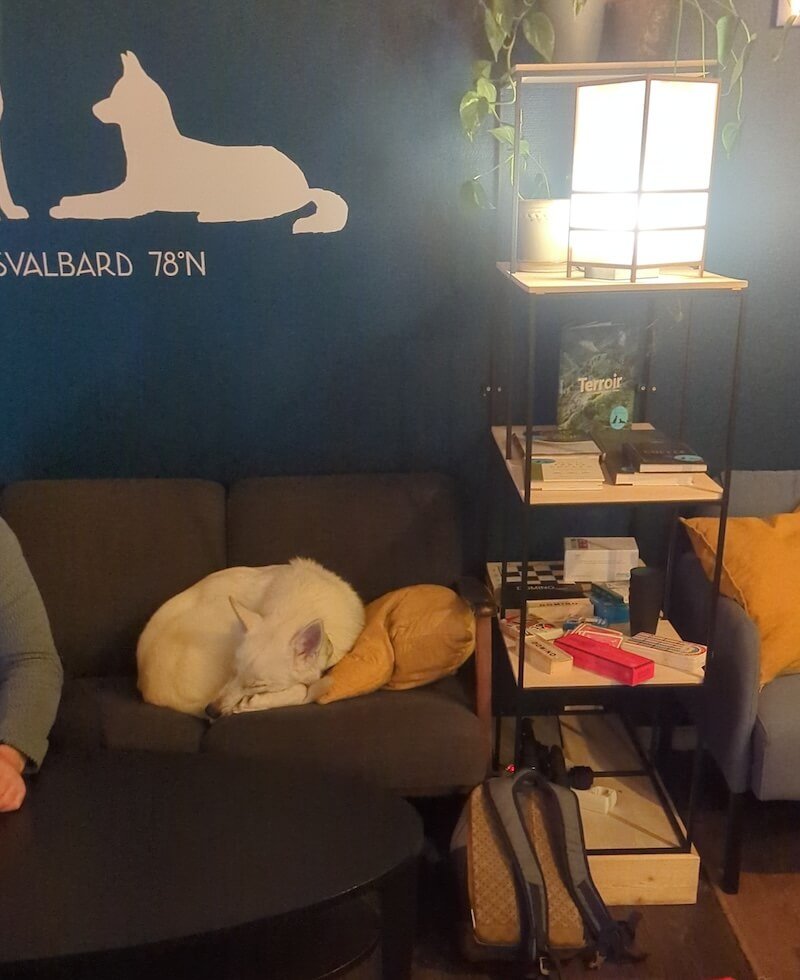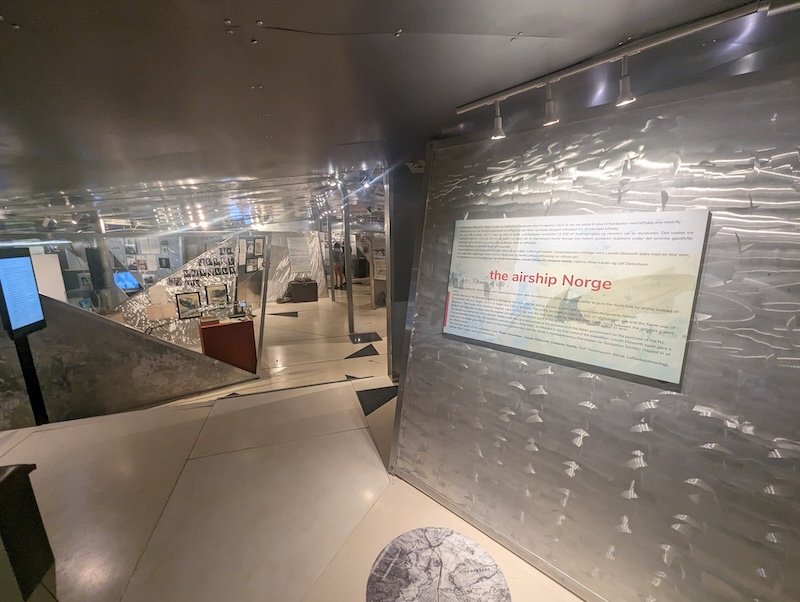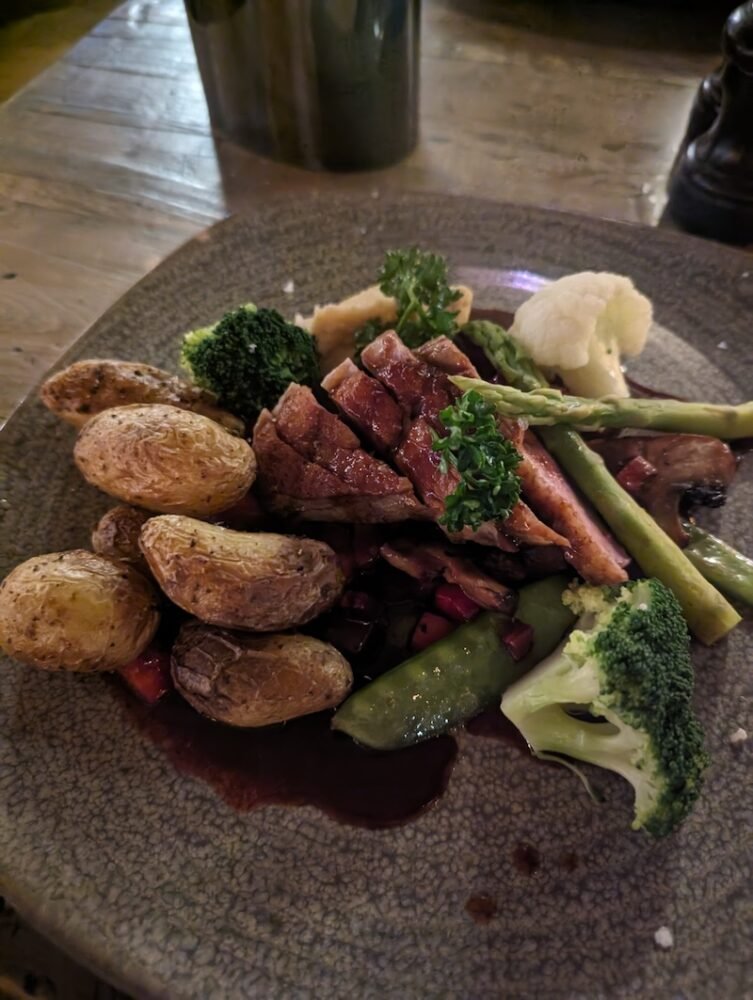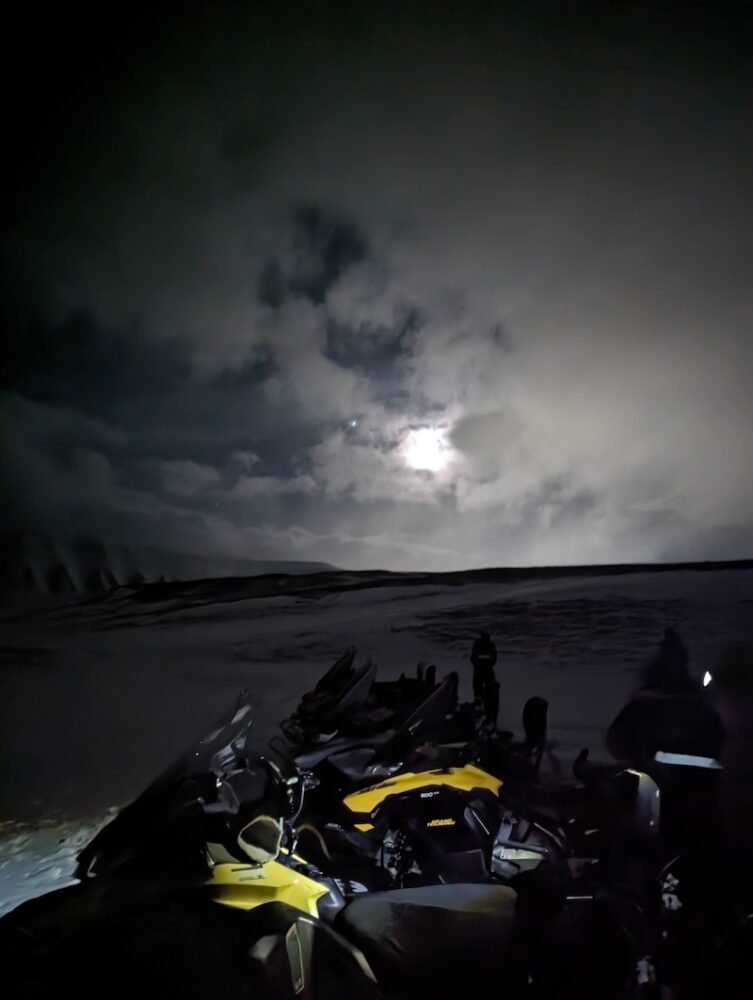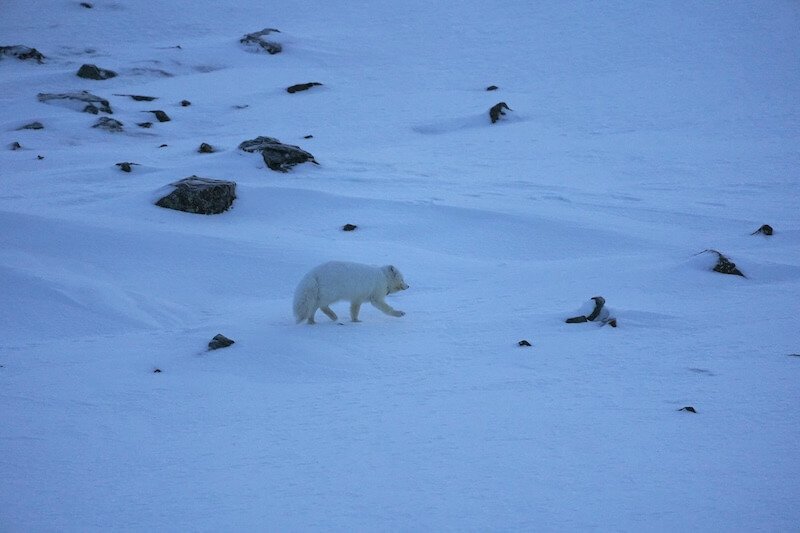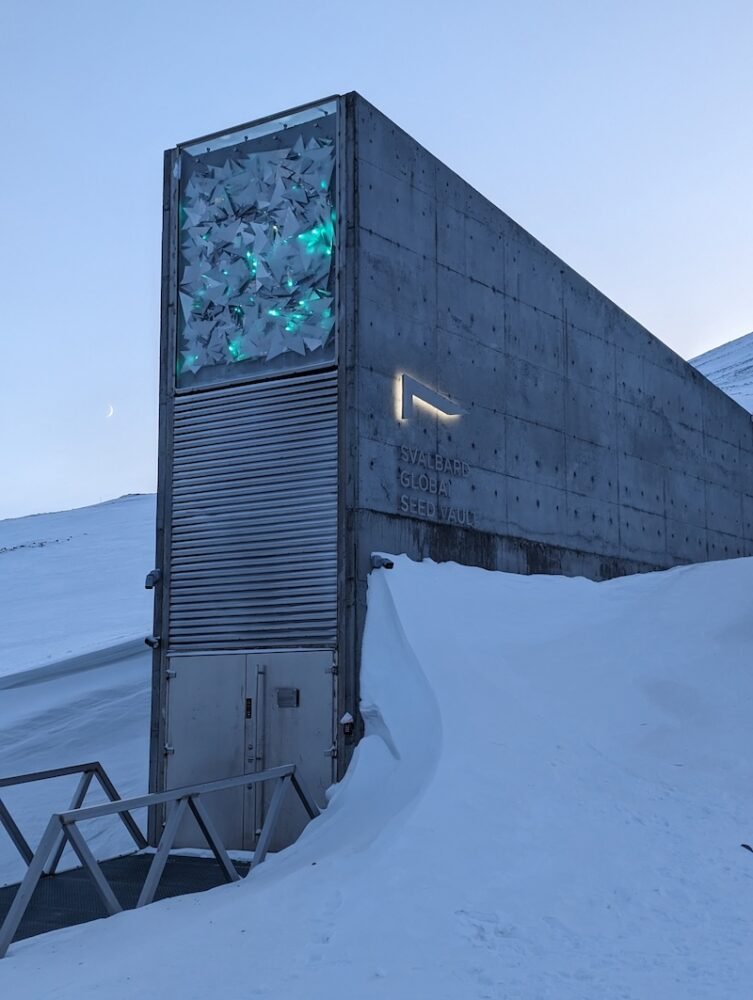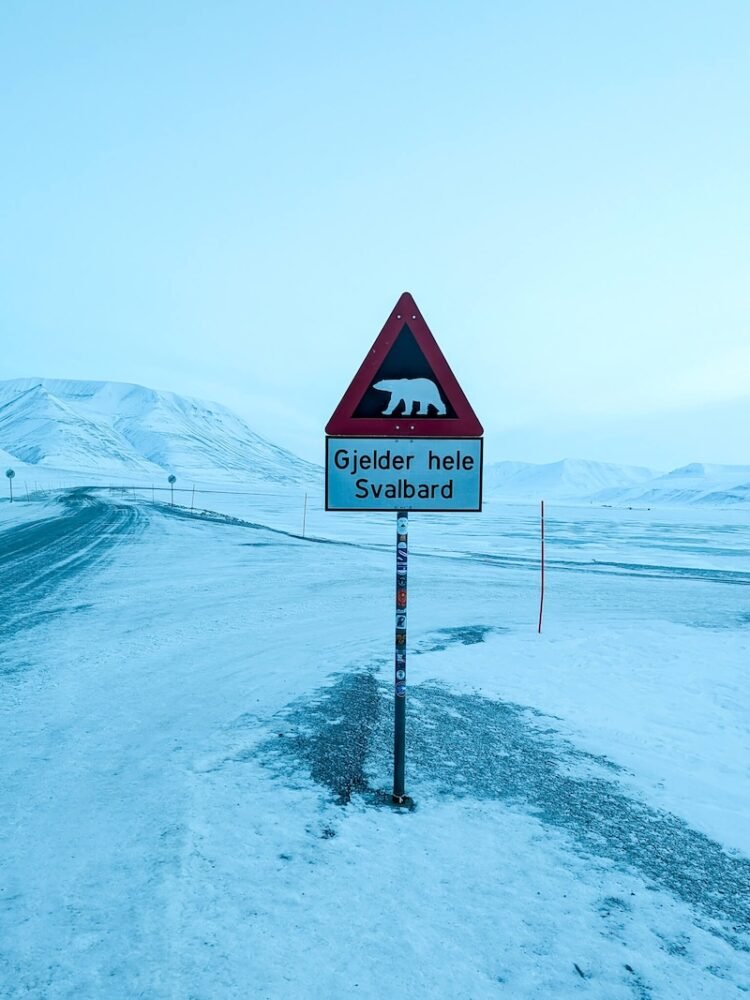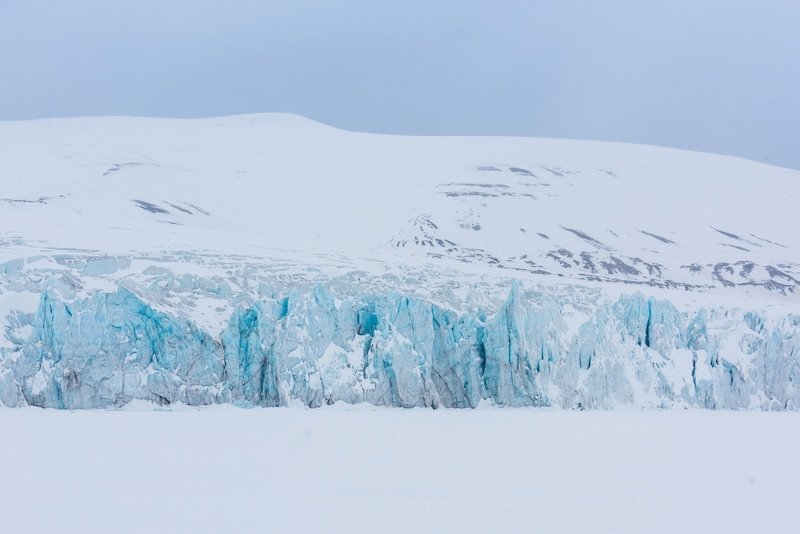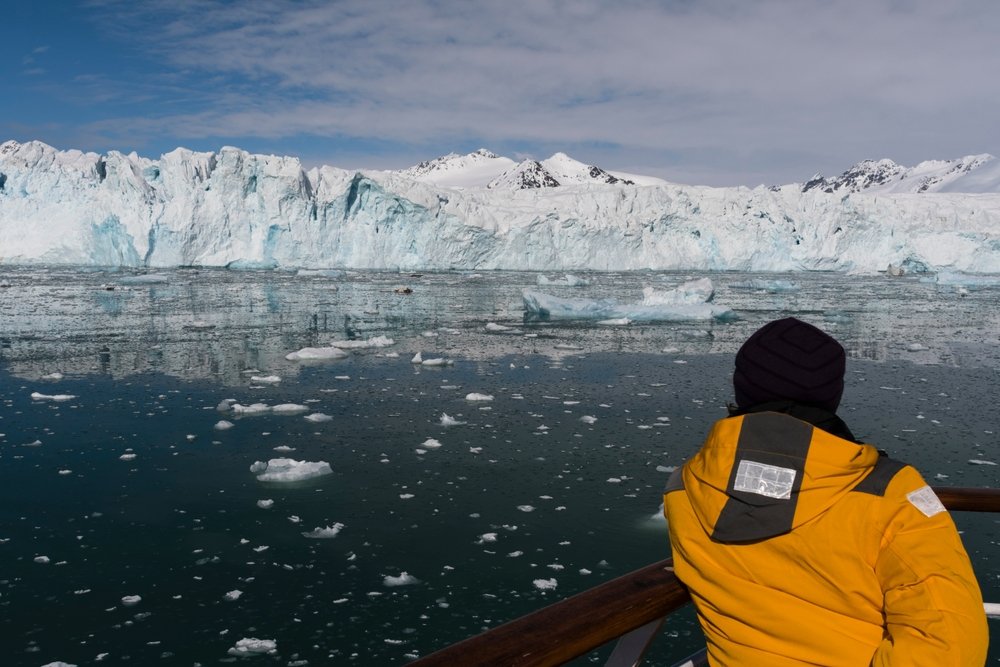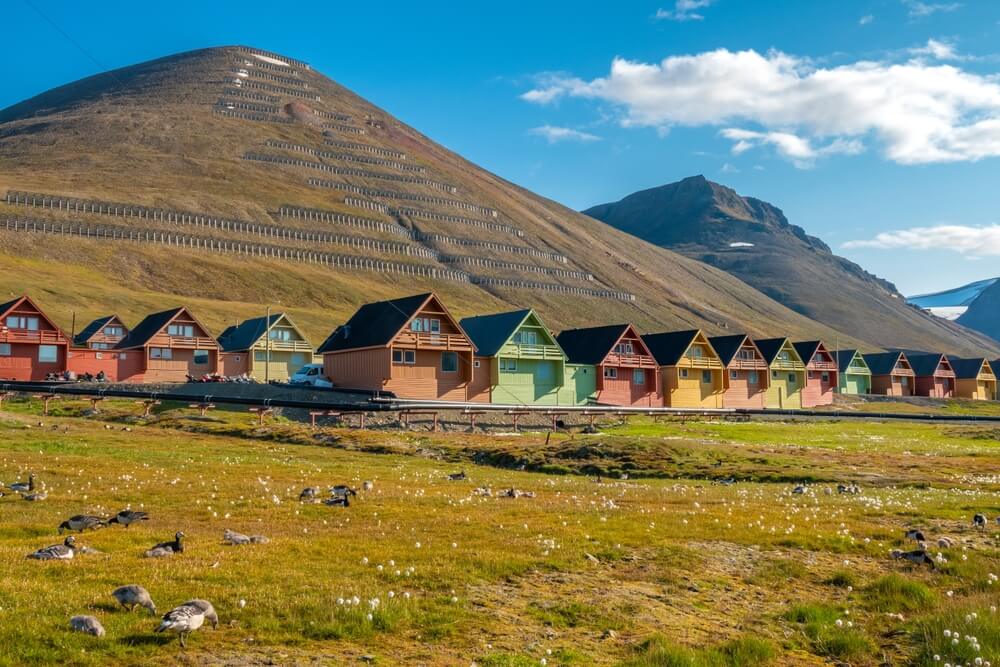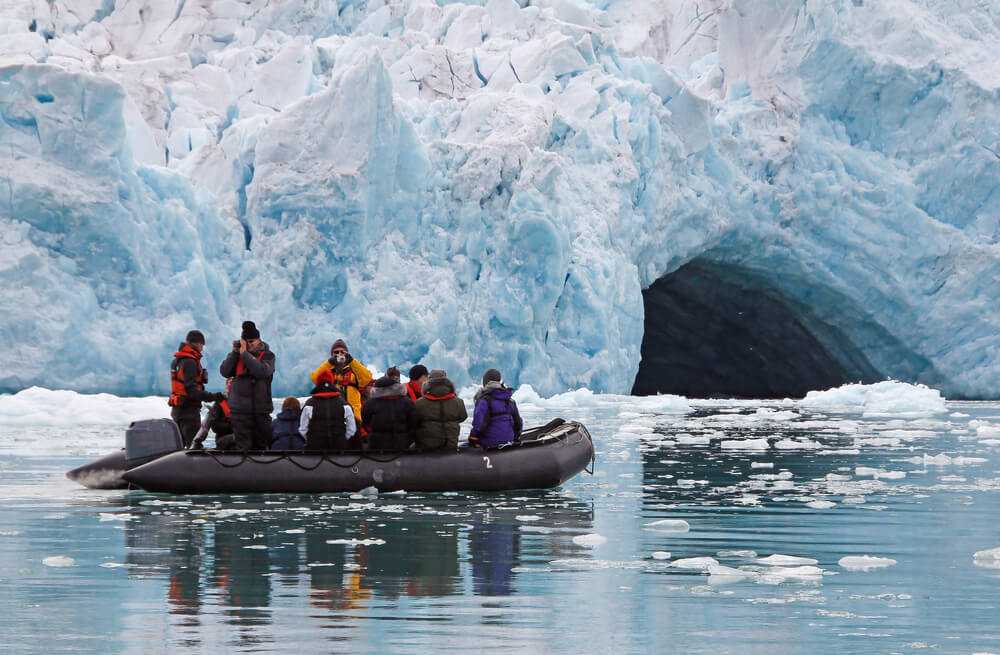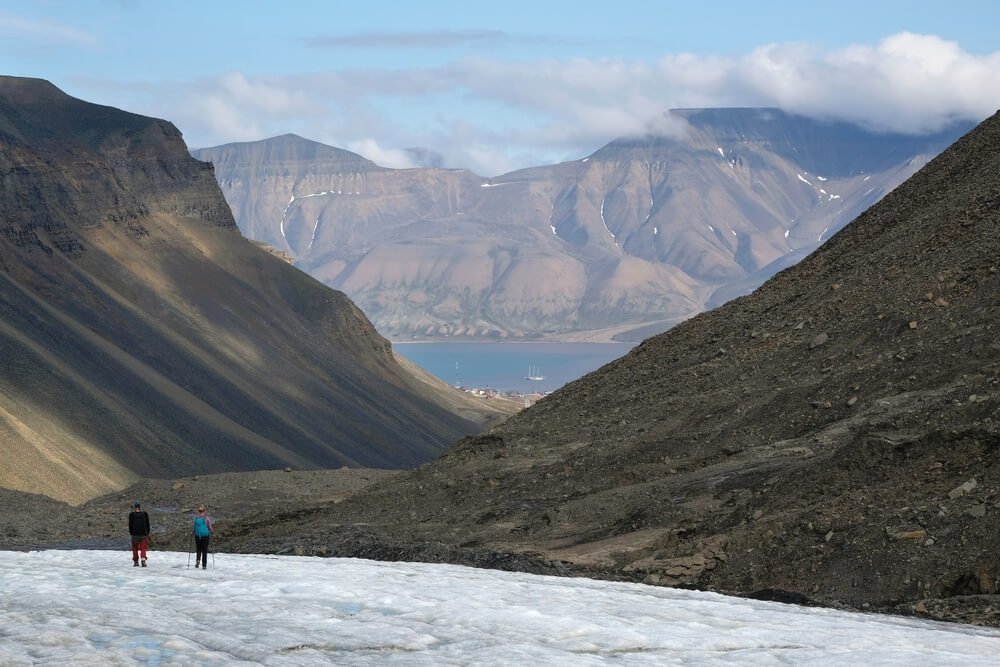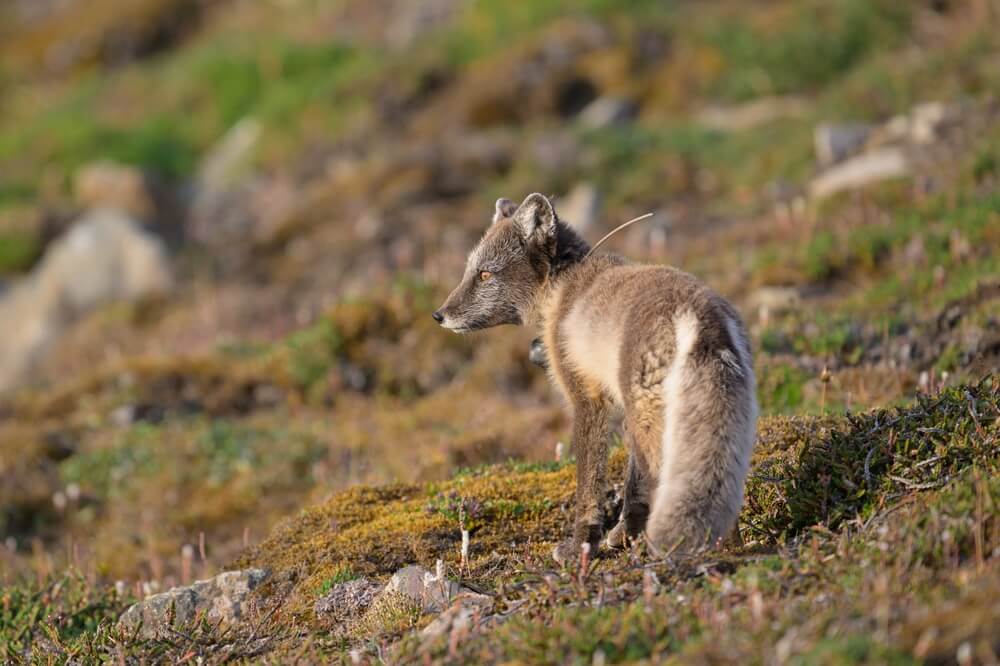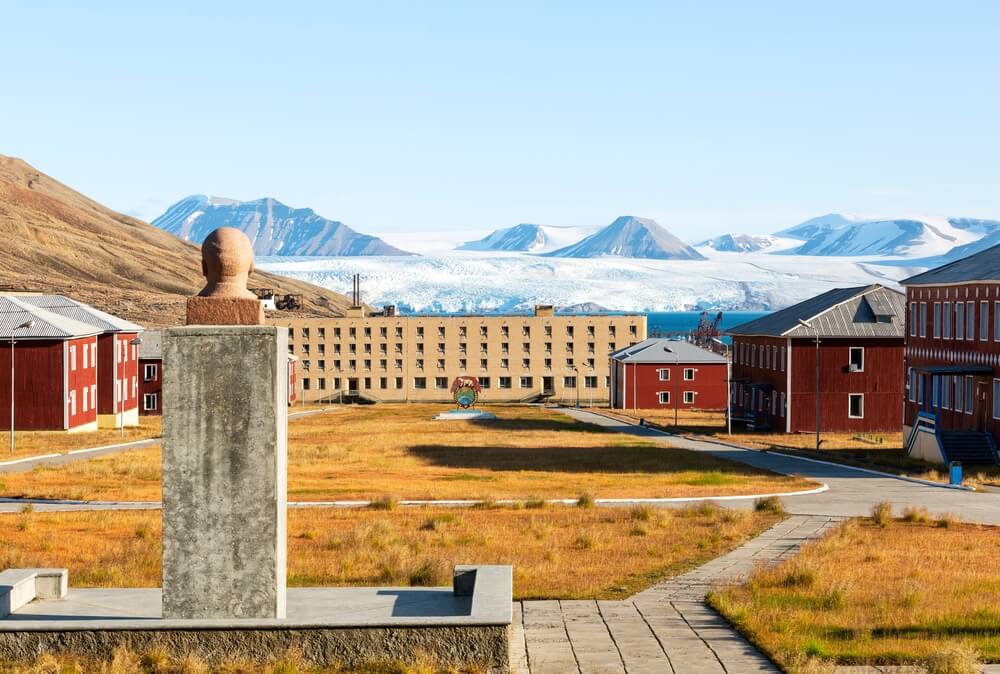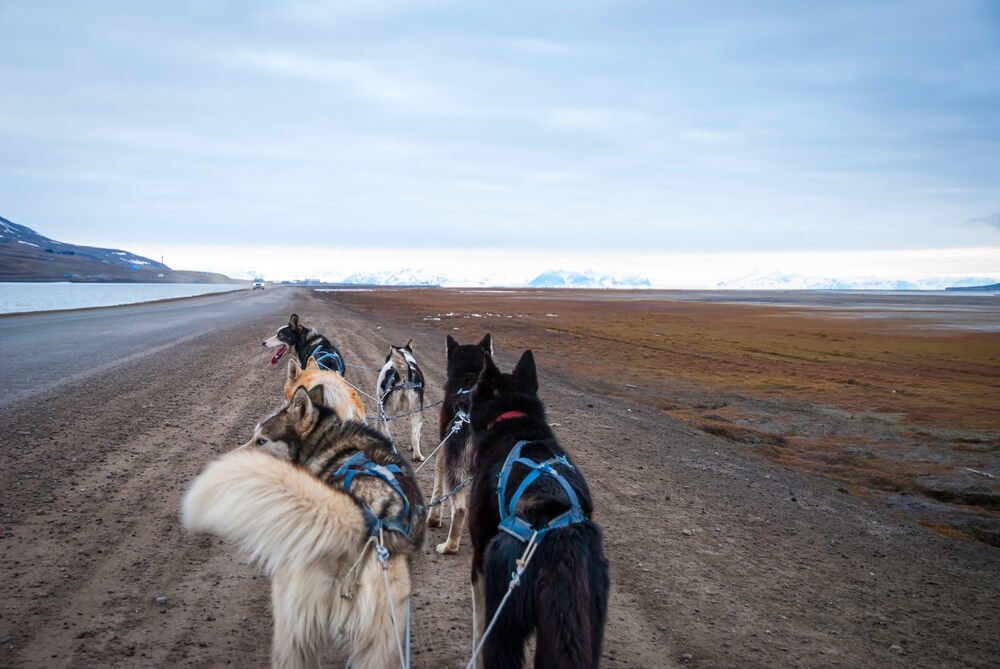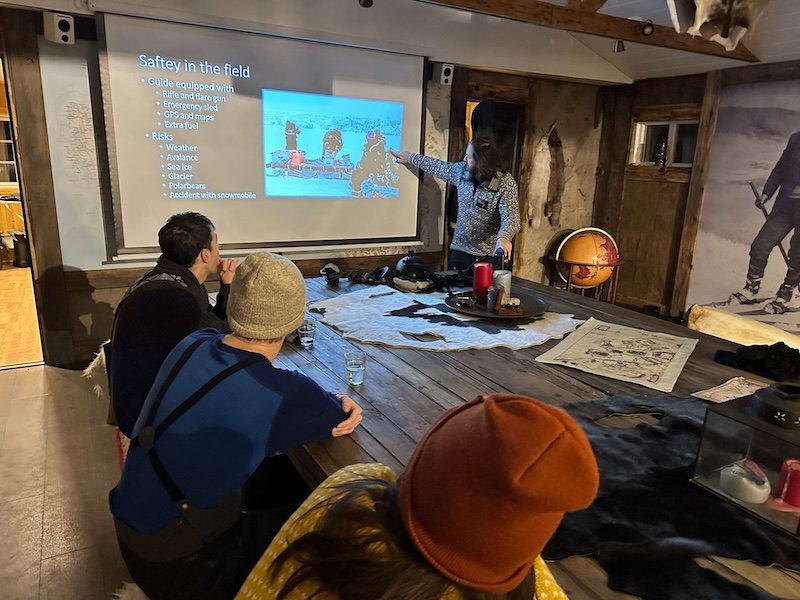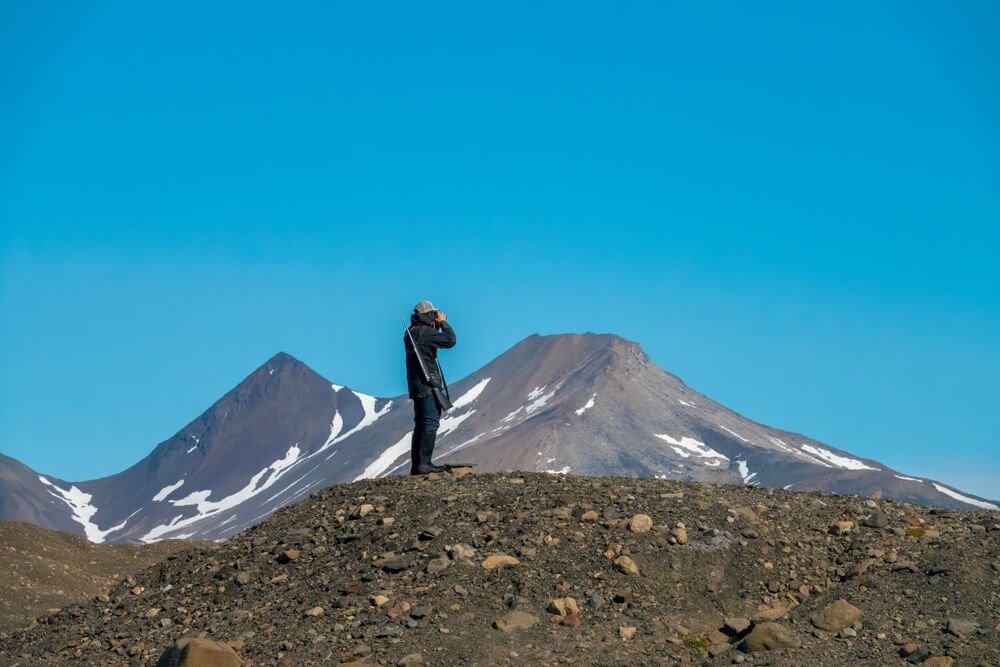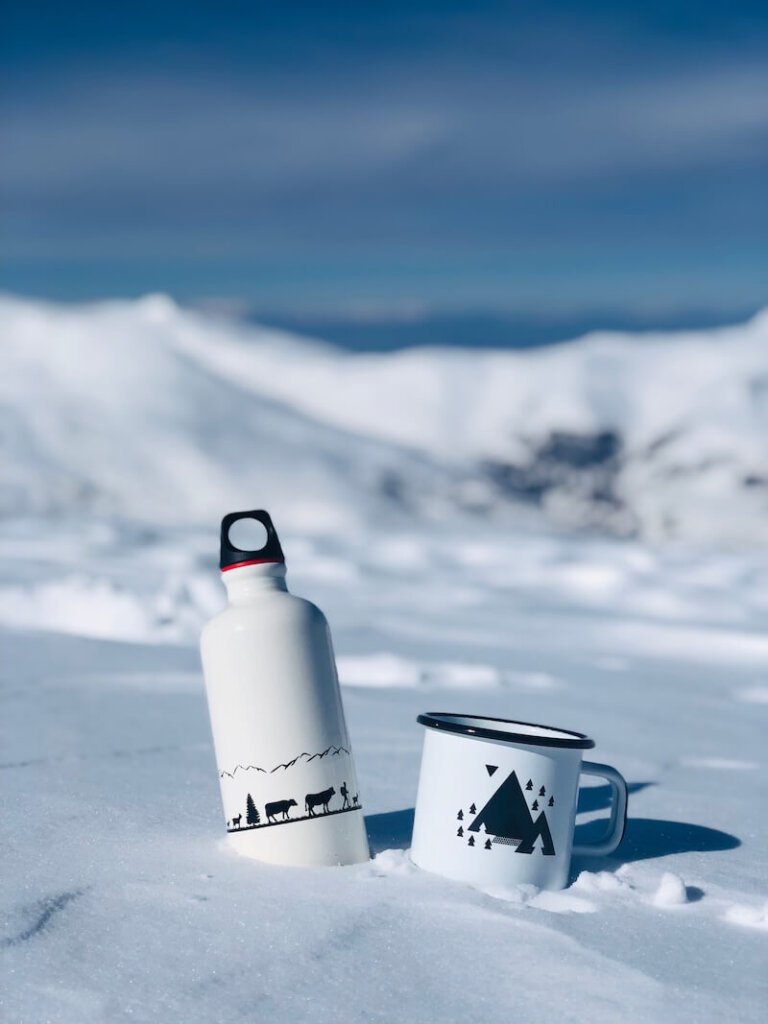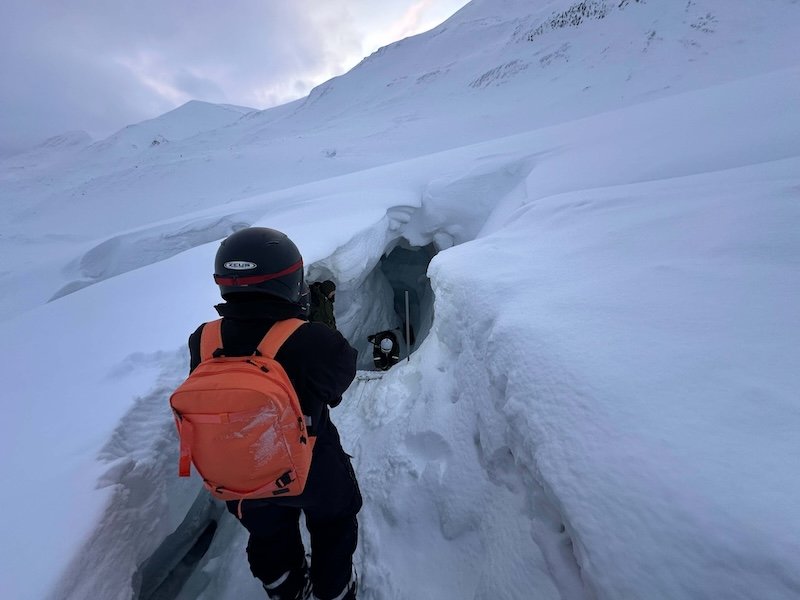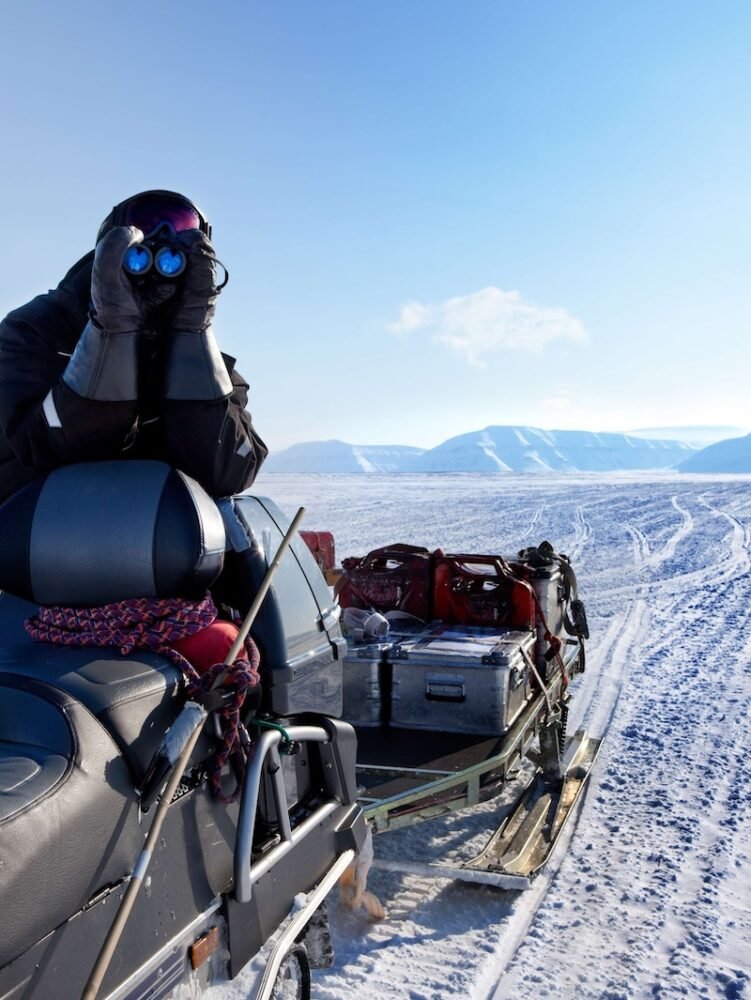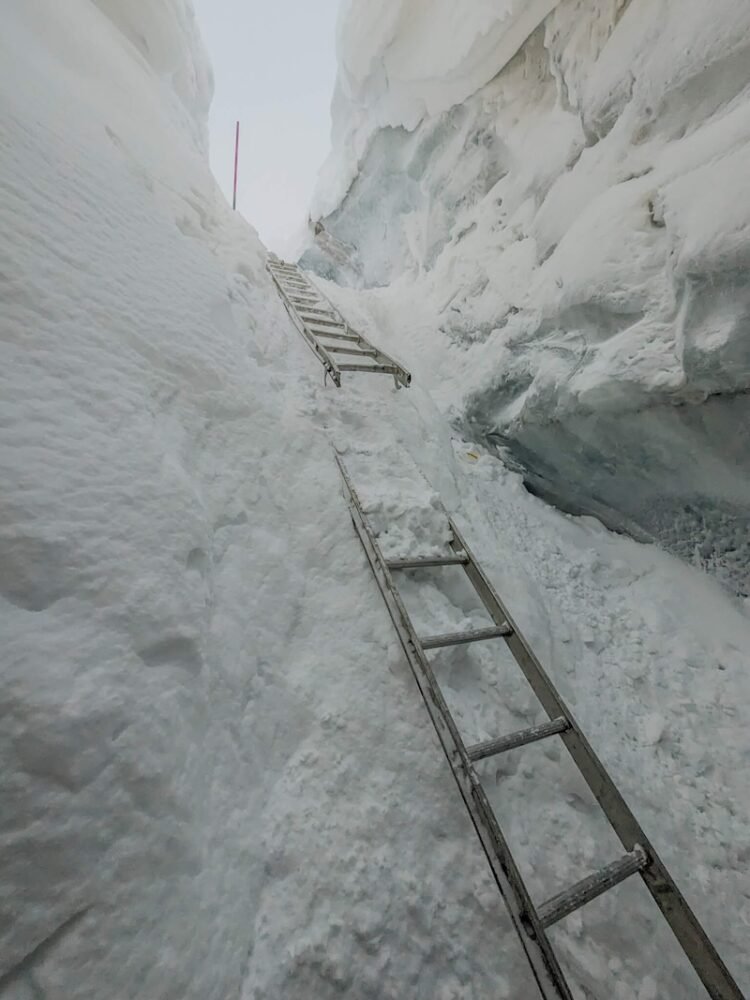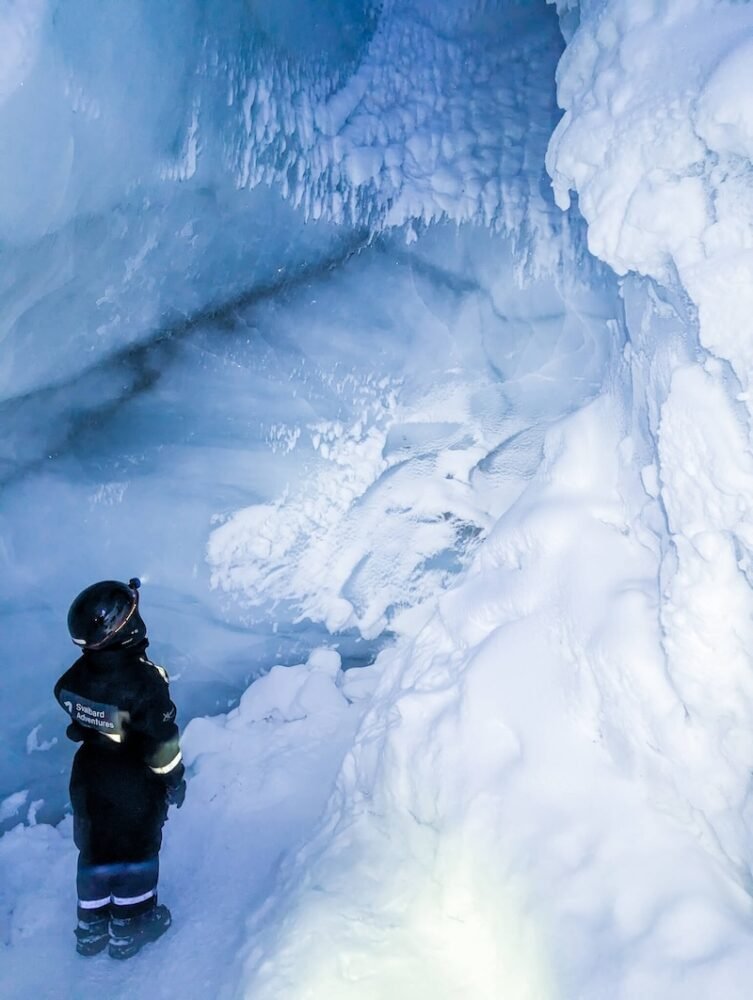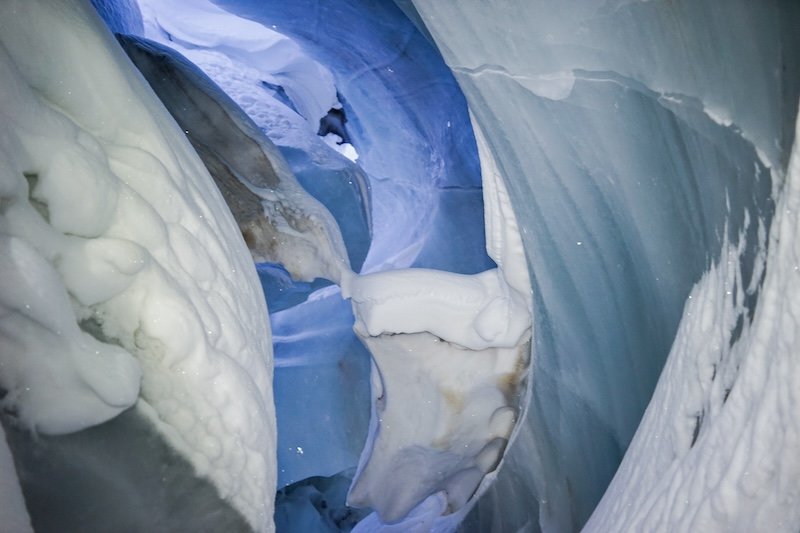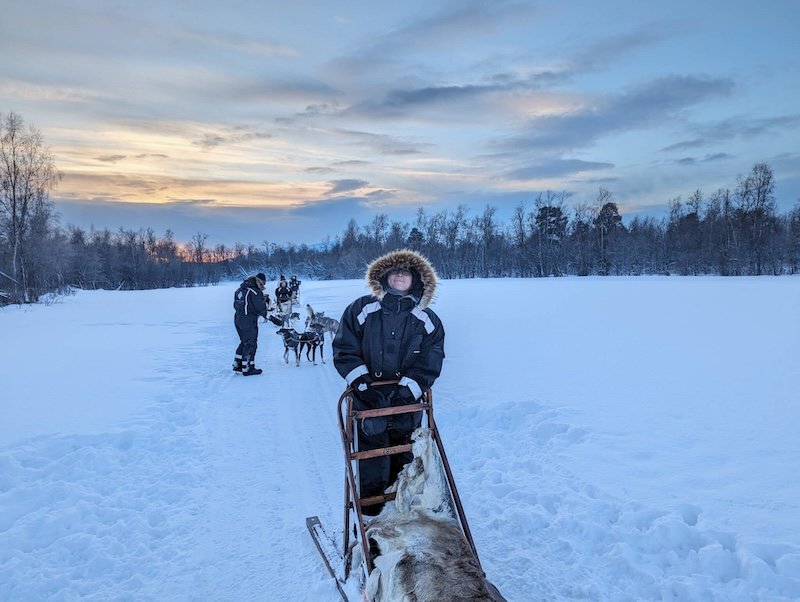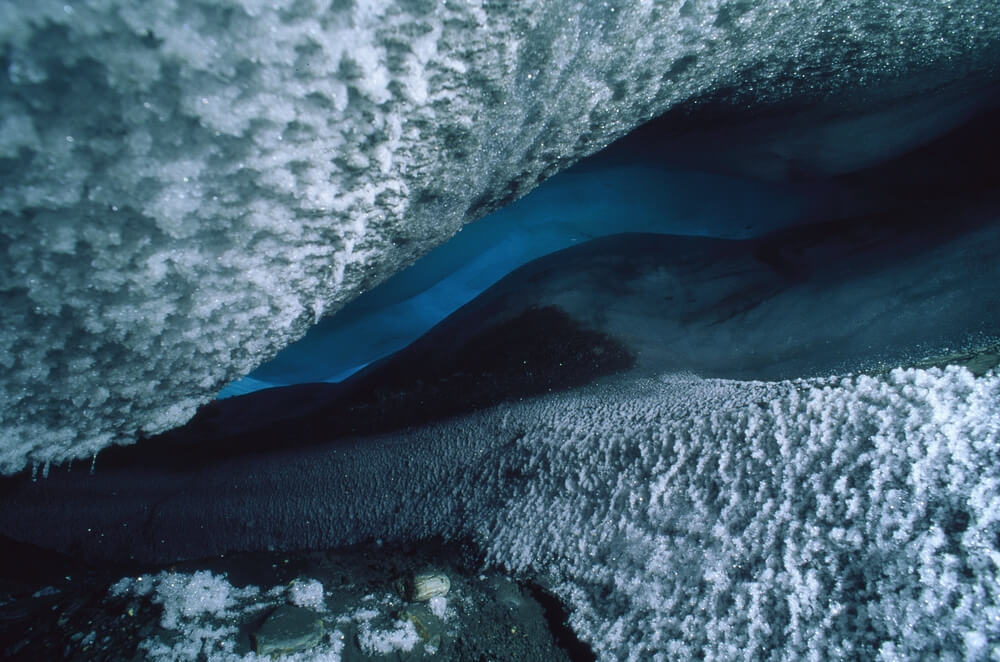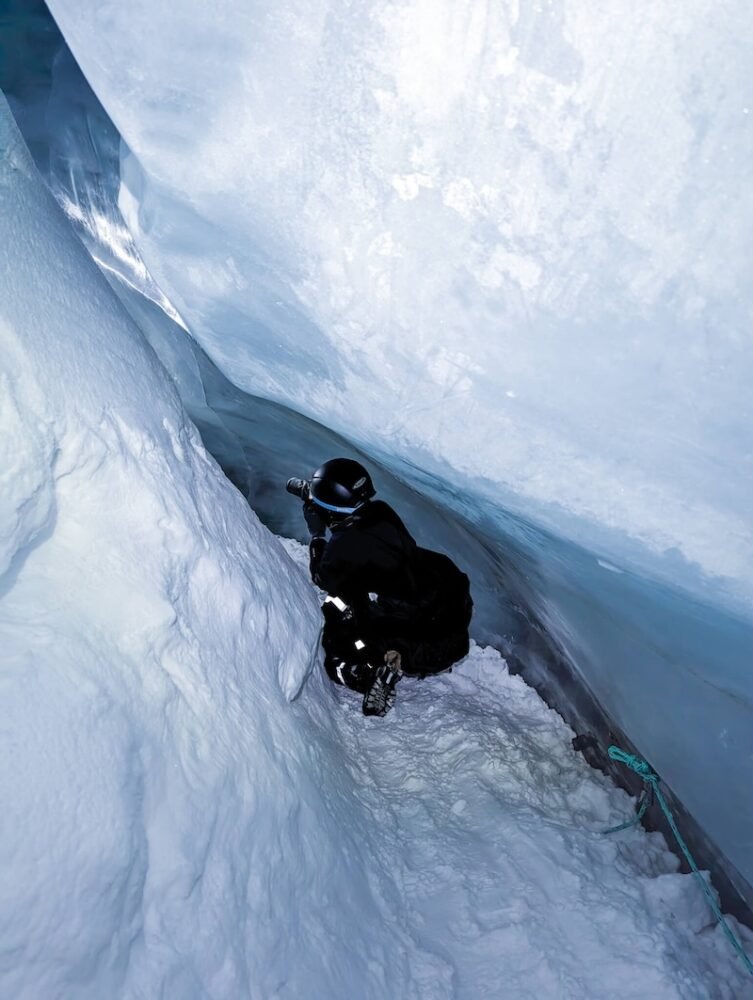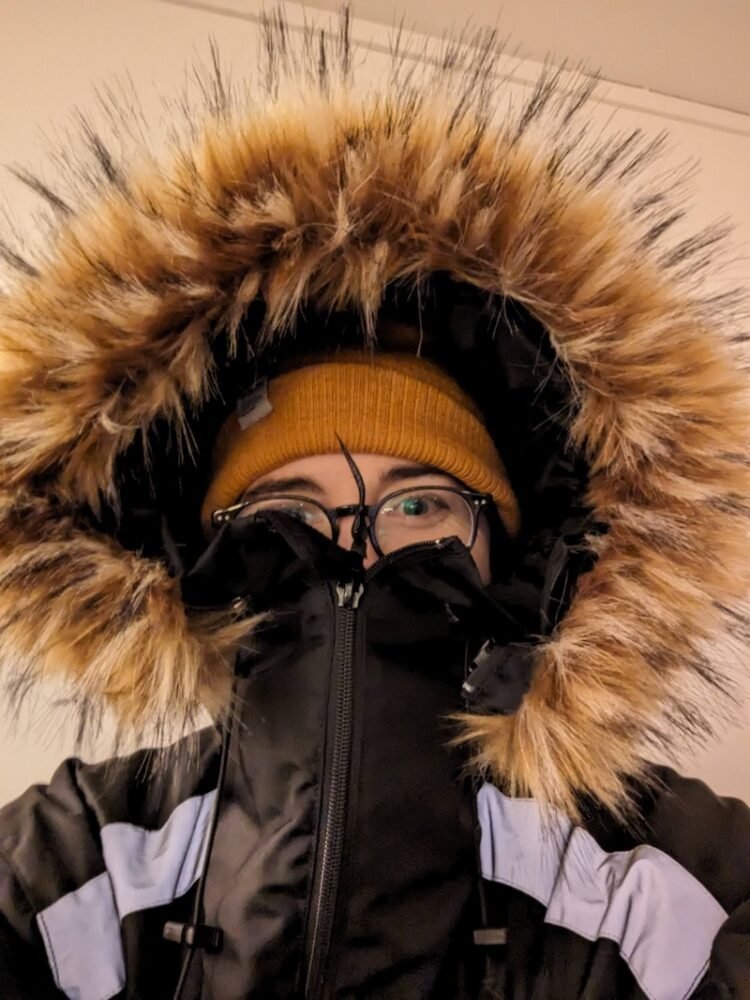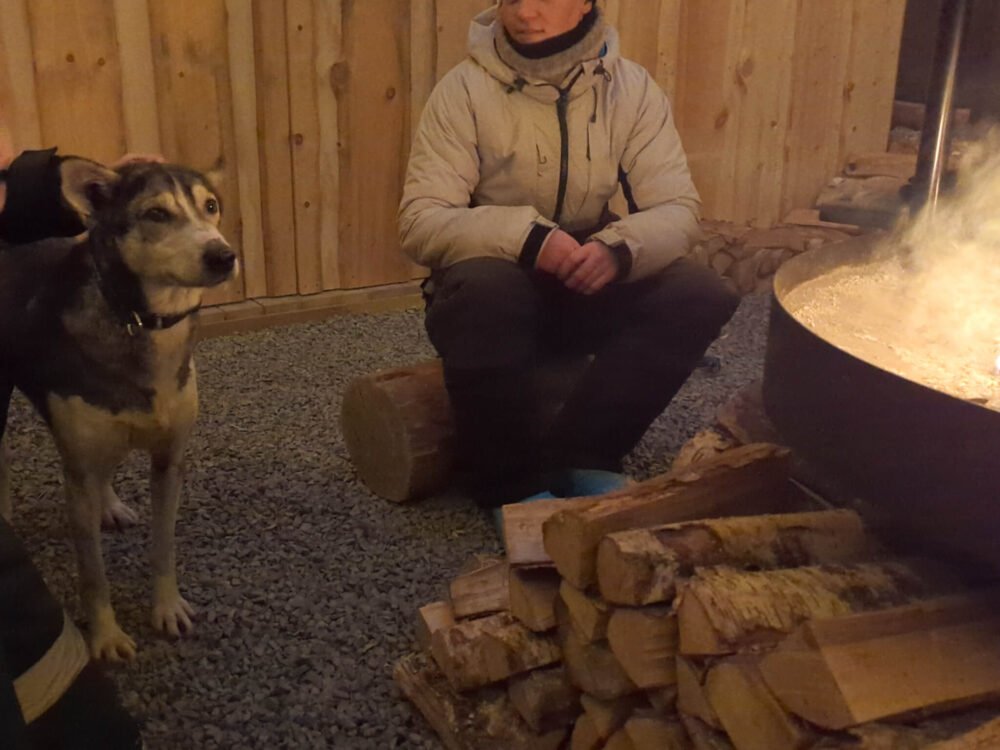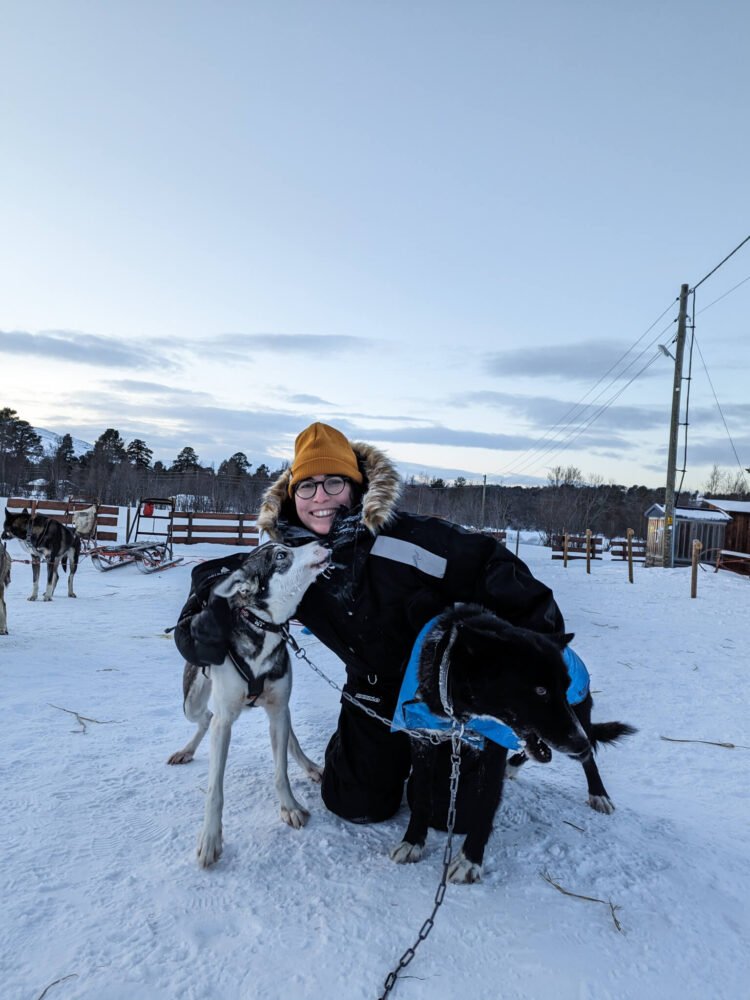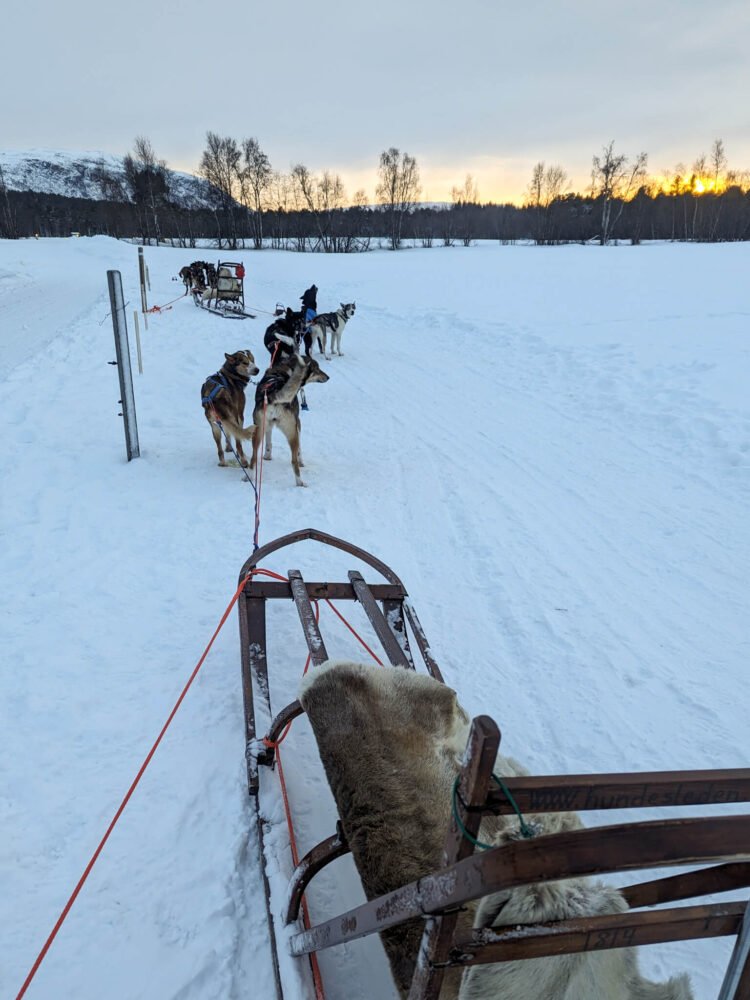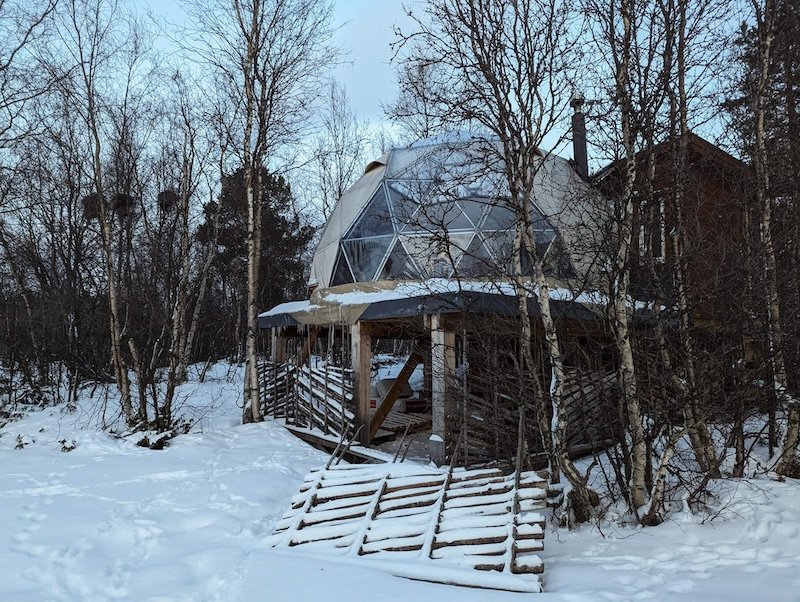Snow-covered mountains and plateaus that glitter in the sun by day and cast a beautiful backdrop for the aurora at night: these are my memories of visiting Alta, Norway this past winter.
I had an amazing time visiting Alta in early February, 2024 and found that it far exceeded my expectations — so I felt quite compelled to write this guide to share my findings with you!
For a relatively small city, there’s quite a lot to do here, from dog sledding to chasing the Northern lights to visiting its museums to enjoying some excellent Arctic fine dining.

After visiting Tromsø in winter twice, I’m happy to report that Alta definitely holds a candle to it and is definitely a worthwhile place to visit in Norway in winter.
If you want to escape the ever-increasing mass tourism in Tromsø in favor of a lesser-visited Arctic Norway destination that is well set up for tourism but could use more of it, this guide is for you!
This post will explain all of the best things to do in Alta in winter and give you suggestions for having the perfect winter trip there.
Visit (or stay the night at!) the Sorrisniva Igloo Hotel.
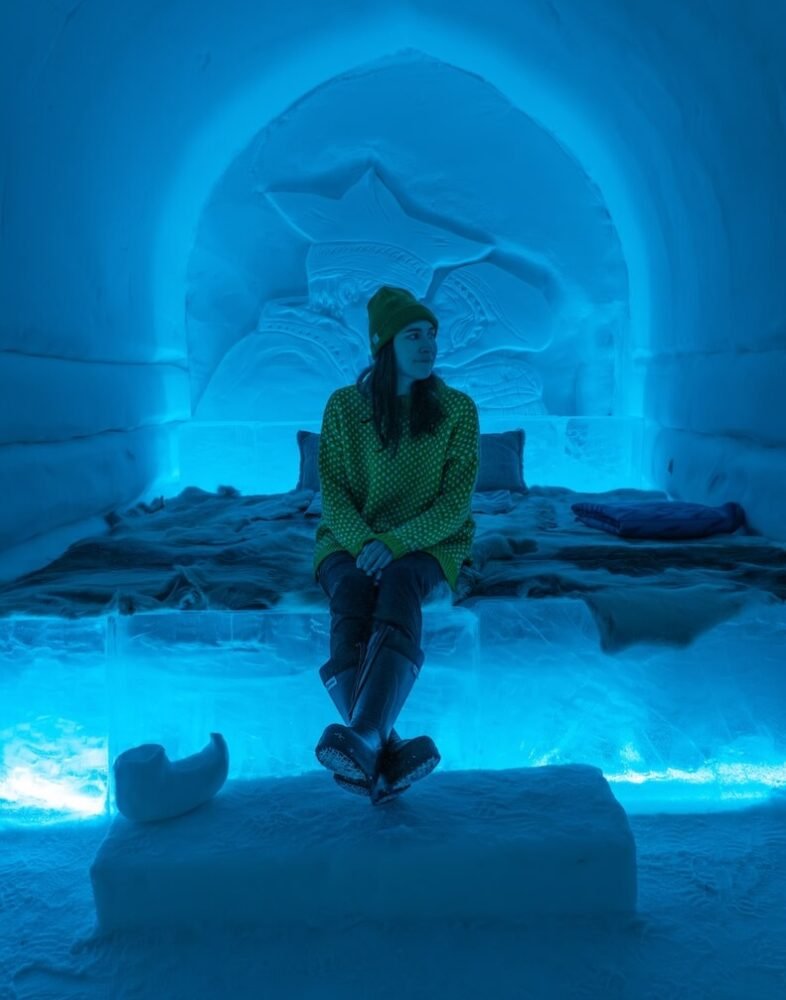
One of the main reasons people travel to Alta is to see one of the best igloo hotels in Northern Norway!
Personally, after having visited the Tromsø Ice Domes (as well as ice hotels in Sweden and Finland) in the past, I can definitively say that the Sorrisniva Igloo Hotel is my favorite of them all.
As a bonus for budget-minded travelers, it’s also one of the largest igloo hotels, making it surprisingly affordable to splurge on an overnight stay in one of the economy double rooms. However, note that these double rooms offer less in terms of aesthetics.
For the really spectacularly-styled rooms, you’d want to upgrade to a suite room. These have beautiful ice sculptures over the bed as well as a seating area (covered in reindeer hides, because no one wants a cold butt) as well as colorful aesthetic lighting that makes the blue ice of the snow hotel really come to life. Obviously there’s a lot more effort involved in this — hence the higher prices.
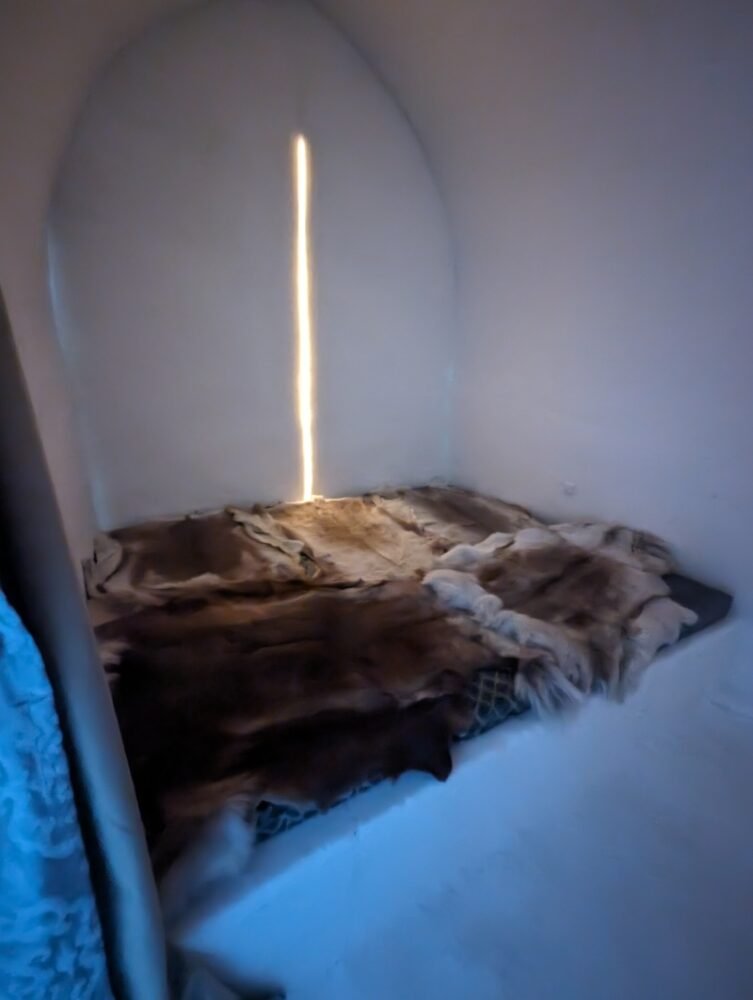
Even if you can’t afford to spend the night (or simply don’t see the appeal in paying upwards of 200 USD per night per person to freeze in a hotel room), don’t worry. You can visit the Sorrisniva Igloo Hotel for 350 NOK (about 32 USD).
With your entry ticket, you can stay however long you like before the guests arrive for the night (check-in for guests begins at 8 PM) and take all the photos your heart desires.
We spent about an hour at the igloo hotel, enjoying the various rooms and suites and taking pictures of the many ice sculptures and cool features of the hotel, like the ice chapel, the ice bar, and the aurora room with constantly shifting light displays.
Opening for the season each year on December 20th, the igloo hotel works with local ice artisans (as well as some foreign artists) to create new sculptures with a different theme so you’ll never see the same exact hotel twice!
Stay up late in search of the Northern lights.

One of the main reasons people visit Alta in winter is that it’s considered the City of Northern Lights!
That’s because Alta has a long history of being an important place to learn about the aurora borealis. Fun fact: the world’s first Northern Lights observatory was built in Alta, on the mountain called Haldde, in 1899!
There are various ways to search for the Northern lights in Alta — I wrote a whole post about it, so I won’t reinvent the wheel in this post.
To be honest, we had a (frankly) disastrous minibus Northern Lights tour, but there are other aurora tours that I would recommend trying instead of the horrible tour I took. I wrote about it here if you’re feeling like indulging in a bit of schadenfreude — or just learning what tour to avoid.
If you want a different (read: actually good) tour, check out this one!
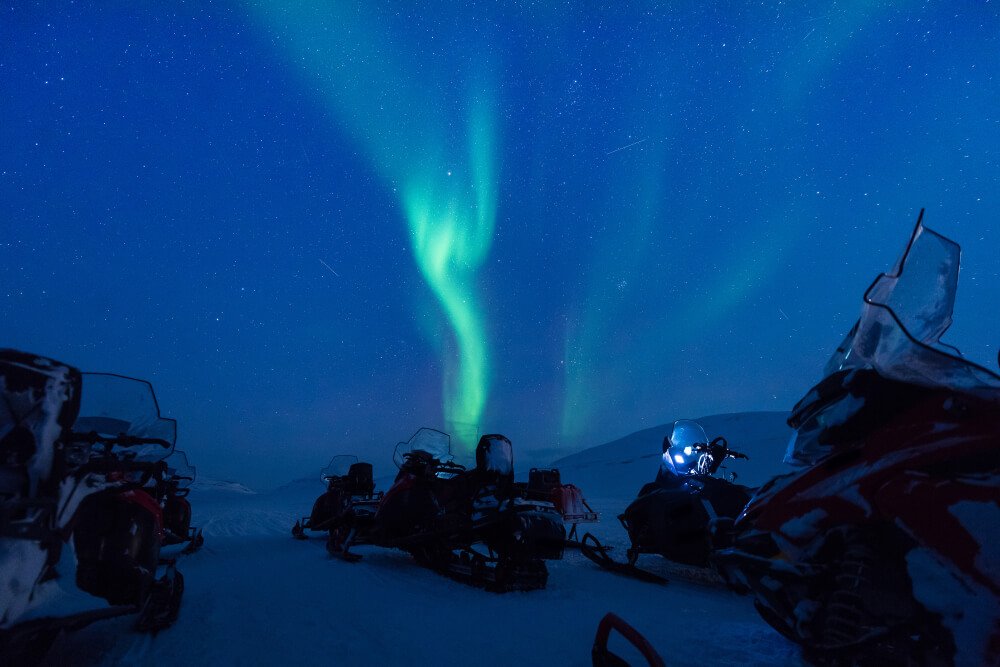
If you want a more adventurous way of seeking the Northern lights, you can have fun doing a snowmobile safari in the winter months—as long as there is enough snow to operate the snowmobiles safely, generally by December or January!
There are other ways to experience the aurora more actively, like taking a snowshoe tour under the aurora which is offered by some tour operators or you can even try fatbiking on snow in search of the aurora, which is a unique option I haven’t seen offered anywhere else in the Arctic.
Still, frankly, I suggest either going by car or having some long-distance transit like dogsledding, snowmobiling, etc.
This offers you the best chances to find the perfect place with a clear sky — which is the only way you stand a good chance of seeing the lights, no matter how much solar activity there is or isn’t.
Here’s a snowmobile Northern lights safari option or a dog-sledding Northern lights option
Go dog sledding with an award-winning team of dogs.

Did you know that you can go dog sledding with literal champions?
Holmen Husky Lodge is one of the best dog sled operators I’ve ever toured with, and I’ve gone dog sledding four times — in Alta (which I write about here), Tromsø, Rovaniemi, and Abisko.
The most notable thing about Holmen Husky Lodge is that it focuses primarily on its dogs and dog sledding operations. Yes, they also have accommodations, but they truly focus on their dogs in everything they do and it shows!
Holmen isn’t allowing tour bookings yet for the season, but you can book a similar husky tour experience here.
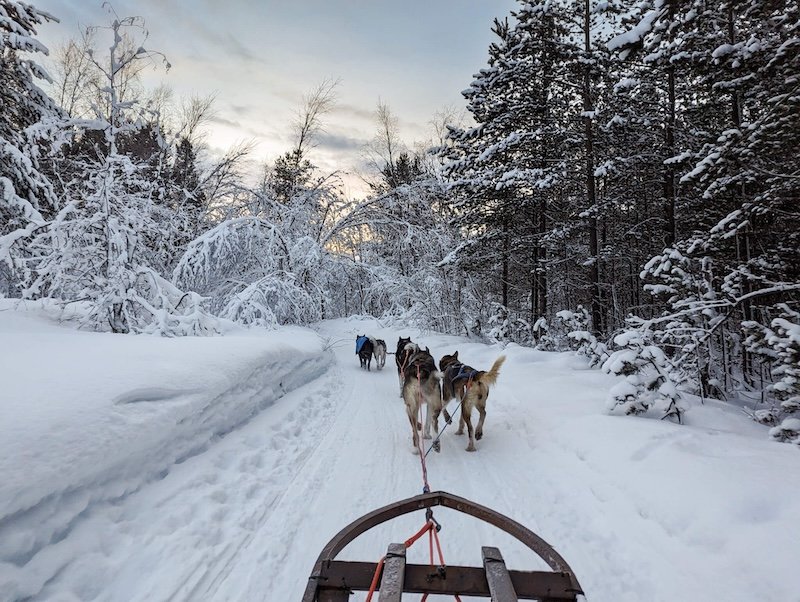
When you visit Holmen Husky Lodge on tour, as you suit up in your exposure suits and get ready for your dog sledding tour, you’ll see all the ‘diplom’ or awards of their various dogs for completing massive circuits of the Finnmarksløpet, either 600-km or sometimes even 1,200-km distances!
Of course, not all the dogs at the husky farm are race runners, but they have a core dog sledding team of champions that you can meet and greet. And trust me, the success hasn’t gone to their heads — they’re not above tackling you with kisses and love.
Join the crowds to send off the Finnmarksløpet racers.
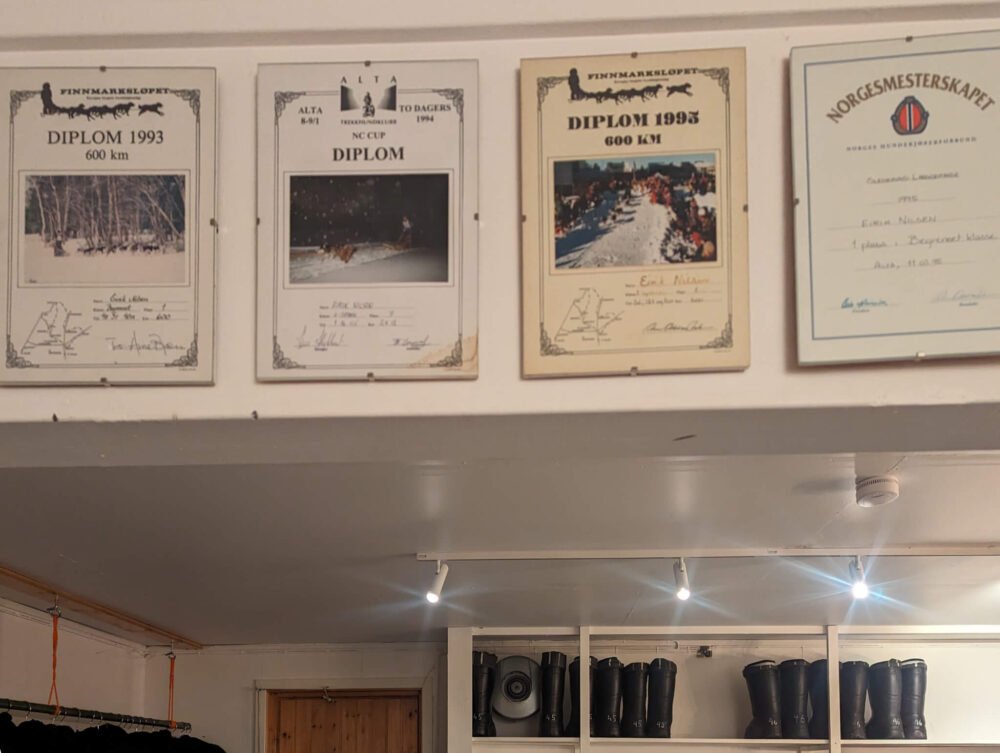
Haven’t yet picked what dates you want to visit Alta? In my opinion, the absolute best time to visit is the annual Finnmarksløpet, the longest dogsled race in Europe!
It’s actually sort of a 3-in-1 event: there’s the famous FL-1200, which tackles 1,200 kilometers (or 745 miles for my fellow Americans) of wild Finnmark terrain. This is the toughest race there is and only about 40 mushers attempt it each year.
The middle-of-the-road race is the FL-600, which is the most popular race for mushing teams. They cover 580 kilometers (confusingly, not exactly 600, but I guess they round up!) — that’s 360 miles, which is also quite impressive.
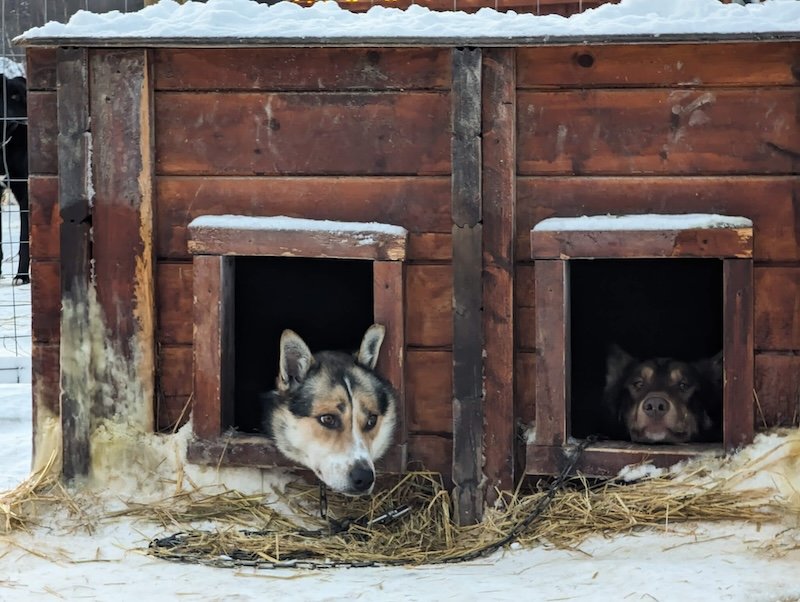
Finally, there’s also a competition for young mushers, the FL-Junior. This is exclusively for young mushers between the ages of 14 and 18, where they race 200 kilometers (125 miles) with a team of six dogs.
All these races depart at different times, starting with the FL-1200, and staggering other races later on in the week, alongside other festivities during the race week.
This is Alta’s favorite time of year, so don’t worry, the dates for the next Finnsmarksløpet have already been determined; they will begin on March 14, 2025.
Have an exquisite fine dining meal at Trasti & Trine.
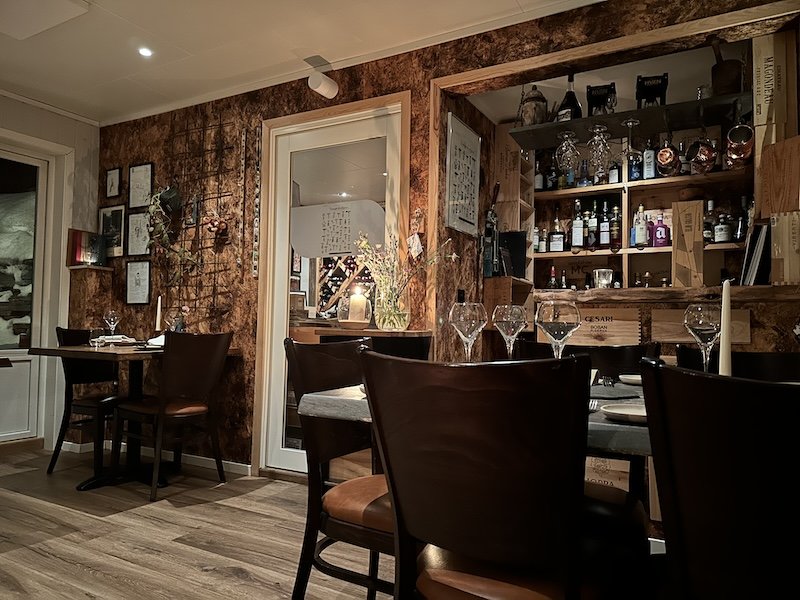
Hands down, the best meal I’ve ever eaten anywhere in Norway (and I’ve spent at least 3 months in Norway!) was the fine dining tasting menu at Trasti & Trine, a boutique hotel with an accompanying restaurant.
We had originally considered staying here, but the aurora cabins we really liked were booked up and only the normal guesthouse rooms were available. We wanted a more convenient location so we instead decided to stay in the center at the Thon Hotel Alta.
While our hotel was excellent, after tasting the food at Trasti & Trine, I am completely certain that we would have had an even more magical experience there… and I have it bookmarked for my return visit to Alta, which I’m hoping will be in the summer next time so I can see all its beauty once the snow has melted.
OK, back to the meal: it was somehow both extremely decadent and decidedly local, choosing down-to-earth ingredients with a beautiful presentation.
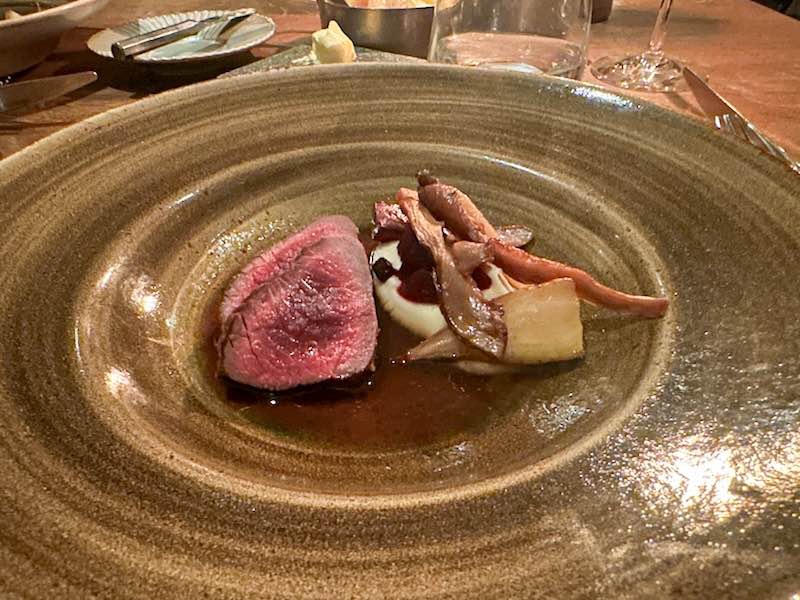
Things got off to a great start with our amuse-bouches: a taste of shrimp salad first, and then a delicious dish of smoked ptarmigan (a local bird) with lingonberries. It was an excellent introduction for what was to follow!
The tasting menu continued with more starter-style dishes, including a unique paté made of reindeer and bear (surprisingly not gamey at all!), and a delicious dill-salmon sashimi served Nordic-style alongside some herbed sour cream.
And honestly, even the bread course was delicious: the tastiest seed bread that words can’t describe served with dill-cultured butter. Despite our best intentions to save room for the rest of our courses, we quickly devoured the bread in front of us like starving peasants, and accepted another refill without a second thought.
Our main dishes didn’t want to make us choose between land and sea, so we were generously offered both. First up was a delicious, generous portion of cod filet, gently poached and served in the tastiest mushroom bouillon broth alongside a bit of steamed kale.
And finally, the pièce de la résistance, our final savory course of the night: perfectly-cooked medium rare reindeer nestled on a bed of parsnip puree, served with oyster mushrooms and beets.I still dream about how tasty that reindeer is!
Of course, a meal isn’t a meal without dessert, and this one—an Arctic berry sorbet with juniper, almond praline, and vanilla cream sauce—was refreshingly light after such a long meal.
This fine-dining menu at Trasti & Trine isn’t particularly cheap, but I think it’s worth it for all that you get. I counted and we had eight different dishes (if you include the bread course and amuse-bouches). It was 1495 NOK per person (about $136 USD), pricy but not outrageous for a tasting menu of such a caliber.
If you want a more down-to-earth but still delicious meal, they offer 2-course and 3-course “country style” dinners for 495 NOK ($45 USD) and 595 NOK, respectively ($54 USD)
Stay the night in an aurora cabin.
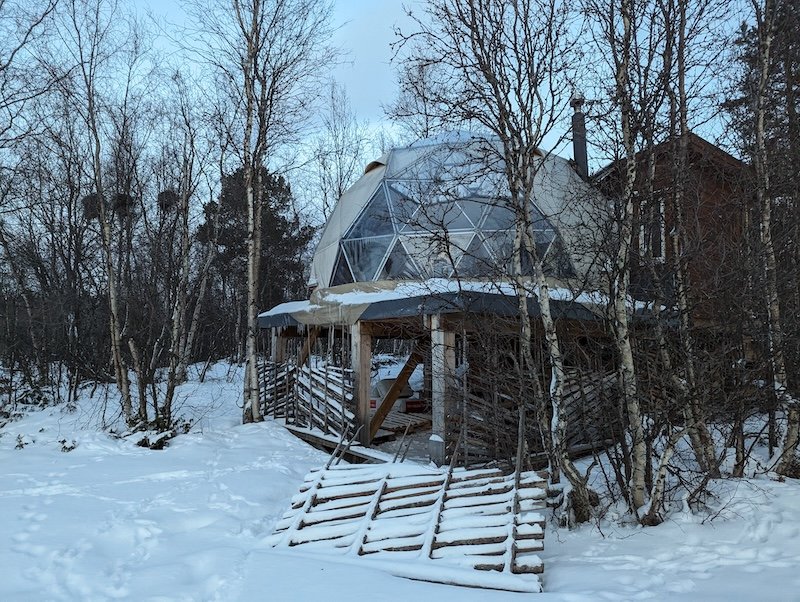
There are a bunch of really cool accommodations in Alta with huge panoramic windows, so you can see the Northern Lights right from your window!
Note that the aurora has to be really strong to see it through a window with your naked eye. I’ve only seen it through a car window once, and it was going so hard, it was practically rioting.
However, having those large windows can help you spot clear skies and then try to go outside for a better view of lights.
And yes, you can take those gorgeous photos of you inside an aurora cabin with the Northern lights swirling overhead—it’s not Photoshop composite magic.
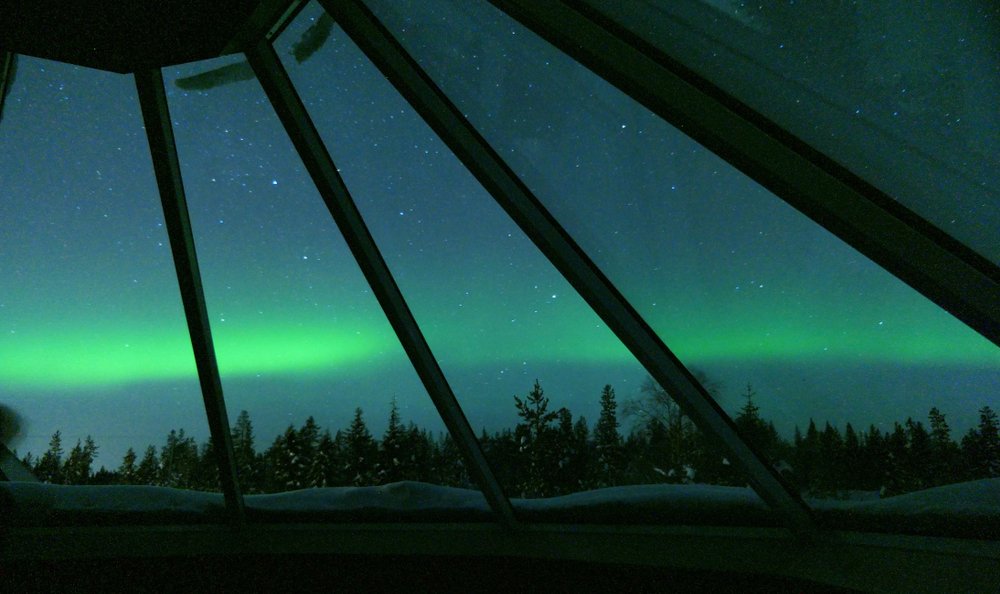
It is, however, long exposure magic, and you can only get those types of photos with a tripod set up and increasing the shutter speed to at least 2-3 seconds to capture both you inside the cabin and the Northern lights outside the window.
As always with the Northern lights, whether you take the photos indoors or outdoors, the lights will always appear more “neon” to the camera than to the naked eye.
Now that I’ve given you the appropriate expectations, here are a few unique Northern lights hotels you can stay at in Alta.
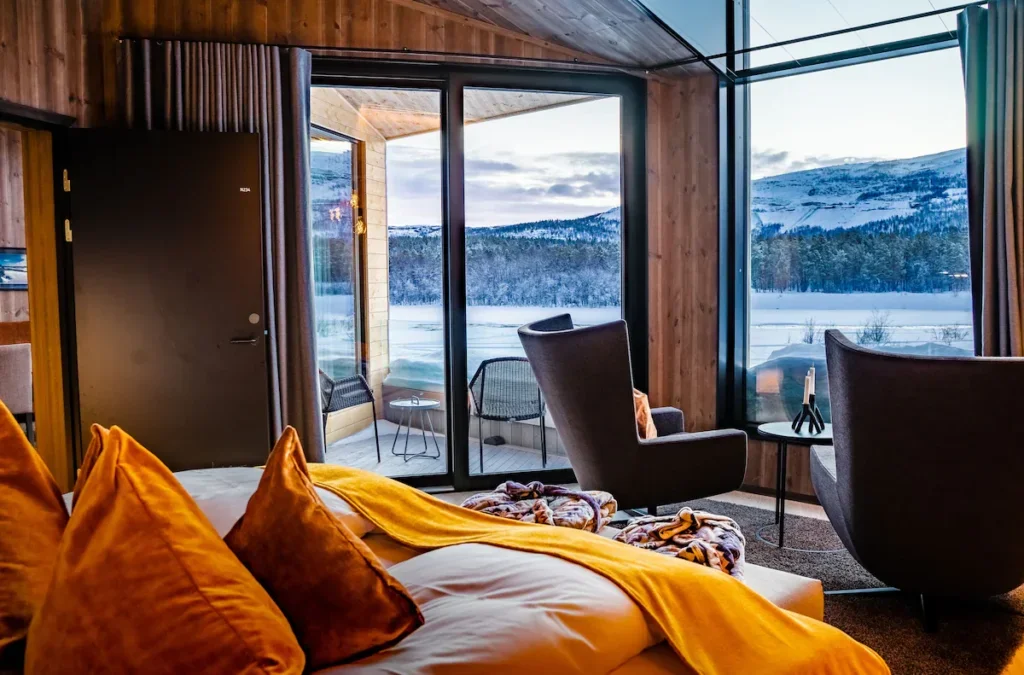
- Trasti & Trine: They have funky cabins with geometric windows that face to the sky so you can try to glimpse the aurora overhead! Also, the best food you’ll eat in Alta, hands down. They also have dog sledding.
- GLØD Explorer: They have heated canvas domes with some glass panels so you can try to find the aurora, and they also offer a lot of fun activities like snowshoeing!
- Sorrisniva Arctic Wilderness Lodge: Not an aurora dome, but the panoramic windows at Sorrisniva are huge (including a panel on the ceiling) and the property is beautiful, and its remote location means lights are easy to spot!
Go whale watching in the Alta fjord.
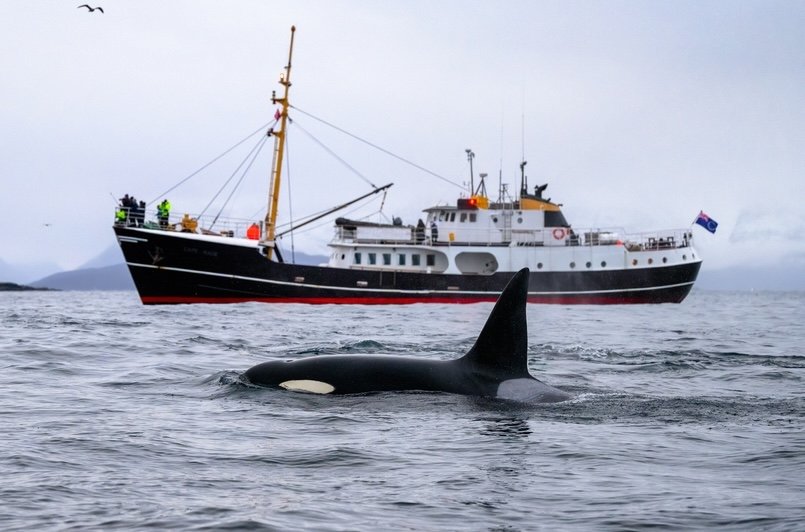
Whale watching is one of the other major draws for visitors to Alta in the winter season, because the whales visit Alta’s very own fjord regularly each year.
And specifically the Alta fjord, not a fjord very far away in the case of Tromsø. That alone makes it one of the best spots in Norway to go whale watching.
You see, Tromsø is known for its whale watching, but to be completely transparent with you, it actually really shouldn’t be. At one point, the whales did visit the Tromsø fjord… but now, due to overfishing and changing climates, the whales steer clear of the area near Tromsø and instead choose the all-you-can-eat herring buffets out in Skjervøy.
This may not mean much to you if you’re unfamiliar with Norway’s geography… but Skjervøy is a far distance from Tromsø, requiring either a winding 3-hour bus ride alongside the fjord’s edge or (worse for seasick-prone people like me) a 3-hour choppy boat ride just to get to the spot for whale watching, where you might only have an hour or so to spot whales before you have to go home.

Alta, meanwhile, has whales right in its very own fjord as well as ones very close by.
This means you can have a shorter tour (which is good in the sometimes-rough winter seas) and have that time dedicated to searching for whales.
Alta is also less impacted by mass tourism, so these boats are smaller and more ethically-run. Unfortunately, I visited Alta in February just as the whale watching season came to an end so I was not able to do this tour for myself.
If whale watching is important to you, I recommend visiting in January so you can both get to watch the whales and also do fun snowy activities like snowmobiling, dog sledding, etc.
Explore the Alta wilderness by snowmobile – day or night!

Alta is best known for its wild nature, between the twists and turns of the pristine Alta River and its location at the edge of the Finnsmarkvidda, Norway’s largest plateau area which is home to the most extreme temperatures in Norway.
Alta’s relatively flat landscape out on the plateau makes it an excellent place for beginners. But it’s definitely not only for beginners, as experienced snowmobilers, too, will find the stunning beauty of Alta’s winter magic enchanting.
It’s hard to be blasé in a landscape this beautiful and untouched!
You can book a daytime snowmobile excursion here or a nighttime snowmobile in search of the Northern lights!
Visit one of the world’s northernmost chocolate factories.
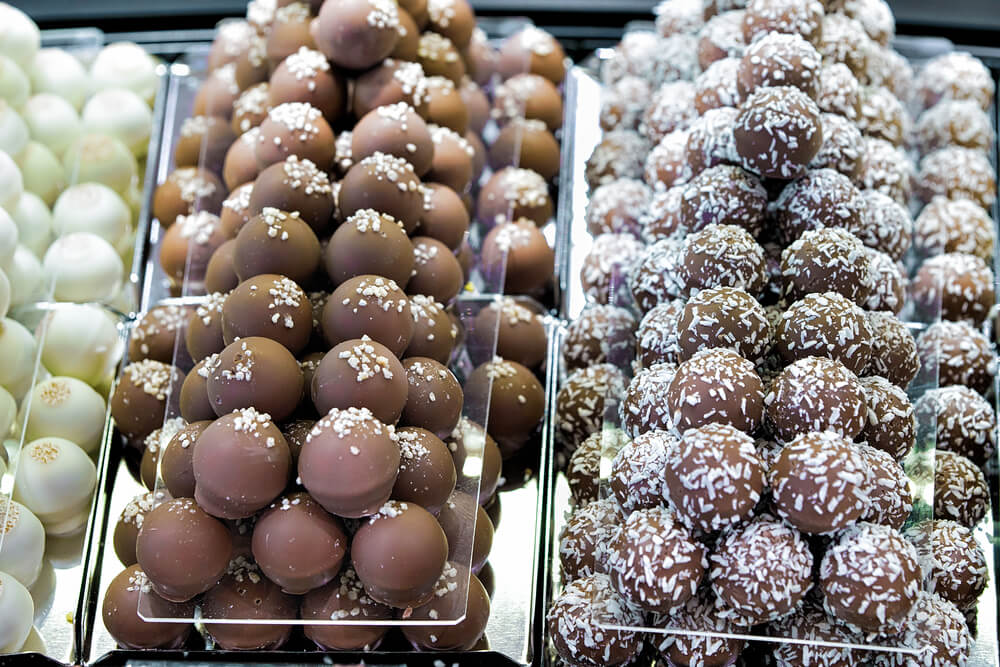
Did you know Alta is home to one of the world’s most northerly chocolate factories? I love random fun facts like this (this is why I love pub quizzes!).
OK, let me get pedantic for a quick second. Technically, Fruene in Svalbard is the world’s northernmost chocolate-maker at 78° N. But still, Alta isn’t that far behind — and I’m never going to slight anyone who tries to bring chocolate to remote places.
On a cold winter day, nothing warms me up on the inside quite like eating some delicious chocolate.
But even better, you can actually tour Æventyr, the chocolate factory (that also happens to run tours, because Alta’s a small town), and see how the magic is made! Learn more here.
Wander down Alta’s main street, Markedsgata.
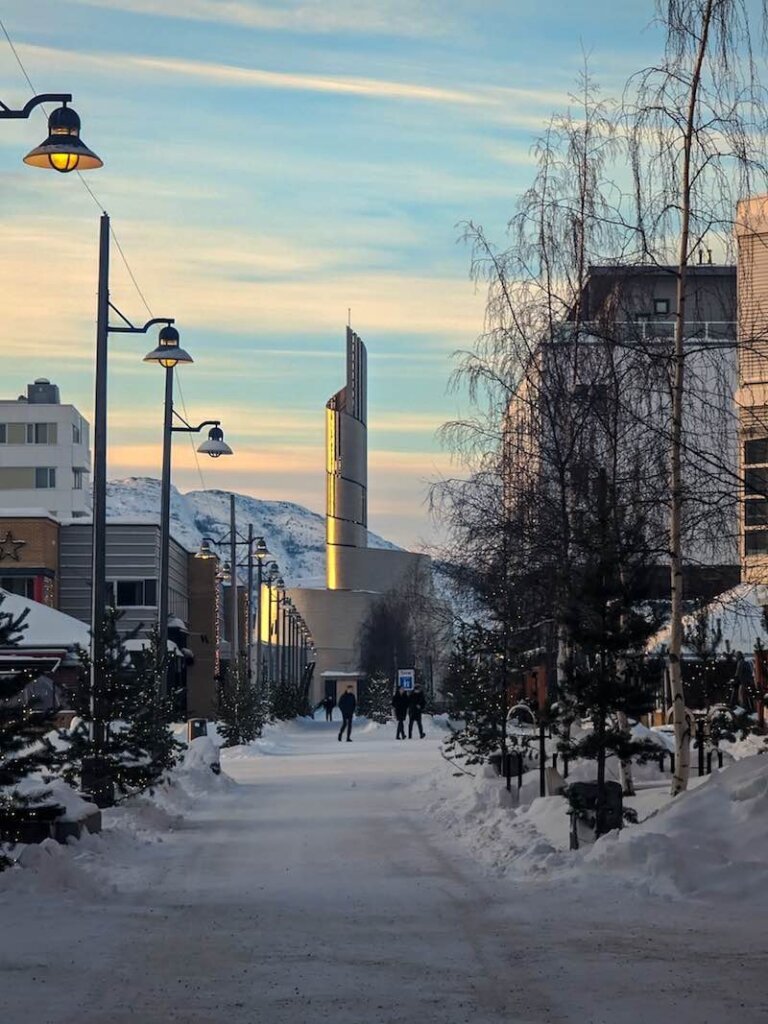
Admittedly, Alta’s downtown scene isn’t the most bustling, but it does have an incredibly scenic pedestrian main street: Markedsgata.
This car-free road brings you past the handful of restaurants in Alta’s dining scene, past the shopping mall entrance, and brings you all the way to the Cathedral of the Northern Lights.
It’s especially beautiful in the winter when there are some festive lights adorning some small trees!
Photograph the beautiful Northern Lights Cathedral.

Whether you can capture the Cathedral of the Northern Lights with its namesake aurora or not, trust me when I say that it’s still the most interesting architectural site in Alta.
OK, Alta isn’t exactly dripping with beautiful architecture — it’s a bit of a strangely laid-out city that was formed when a few villages came together to become one municipality.
But still, beauty is beauty, and the Cathedral of the Northern Lights definitely boasts a certain architectural elegance — one of the decidedly modern variety. Its fluid style reminds me a bit of a Frank Gehry building, but with a clearly Nordic vision behind it. It’s spectacular.
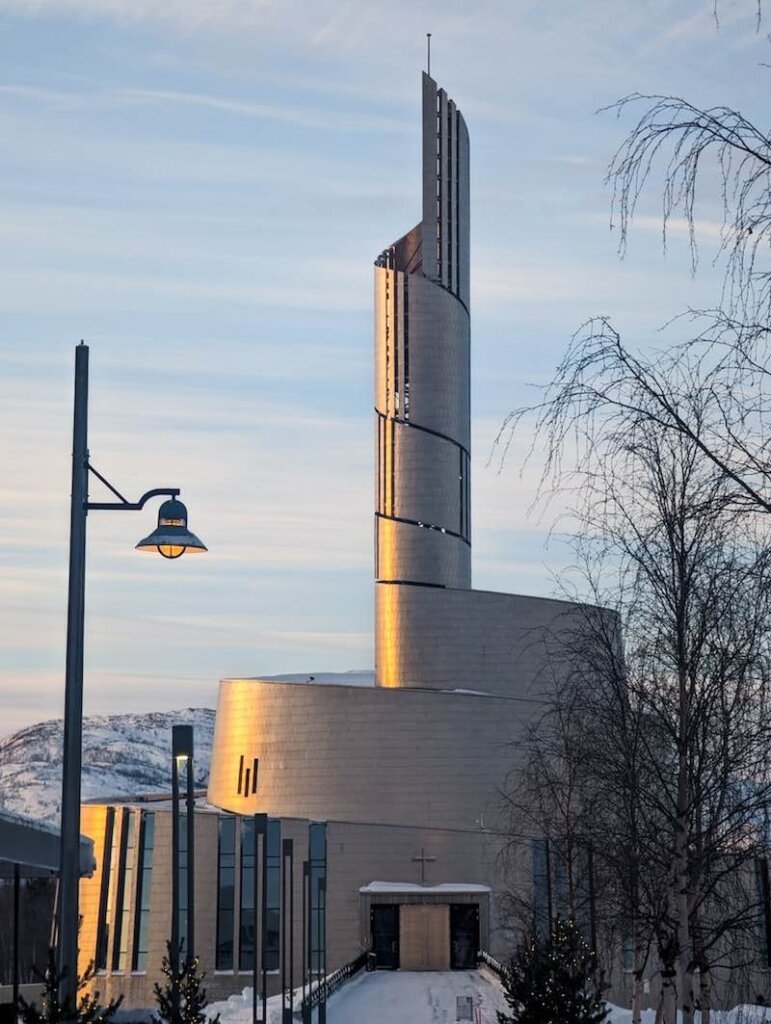
Since it’s so centrally located in the heart of the city of Alta, I think it’s totally worth seeing it at least twice, if not more. You have to see it during the day to really understand its architectural design and appreciate the subtle curves of the metal and how that echoes the dance of the aurora.
And then of course, on a clear night, you have to try to photograph the aurora with it — you definitely won’t be the only photographer trying, but it won’t be crowded per se — and it’s absolutely worth it.
Learn about the region at the excellent Alta Museum.
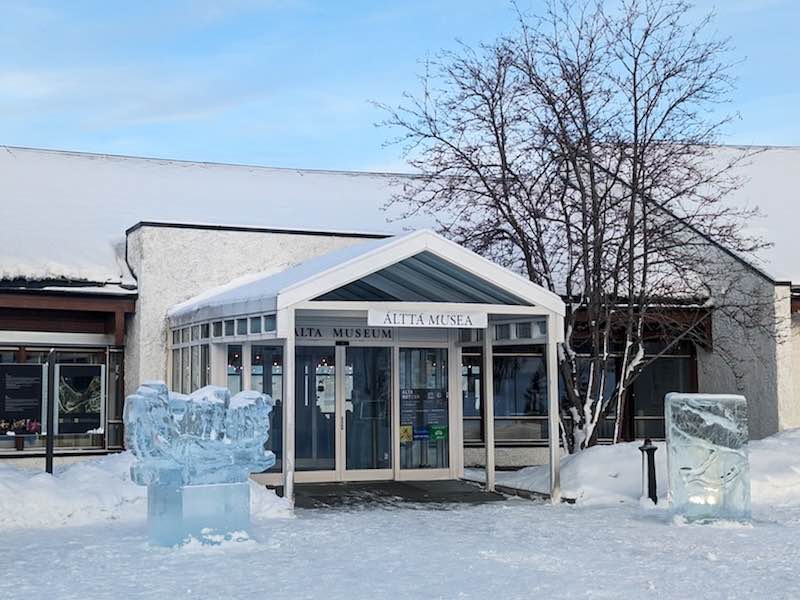
One of Alta’s main claims to fame is the UNESCO-listed Rock Art of Alta, but you can’t see it in the winter because it is located outside and well, Alta is basically nestled up under a giant duvet of snow all winter long.
Still, even if you can’t see its rock art (some of which dates back as far as 4200 BCE!) it’s still absolutely worth visiting the Alta Museum in the winter. Note, though, that you can see a few petroglyphs inside on display even outside the summer season.
Not only can you warm up there, but you can learn so much that it’s almost overwhelming. Trust me, I visit a lot of regional museums. Most are fairly lackluster; this one is not.

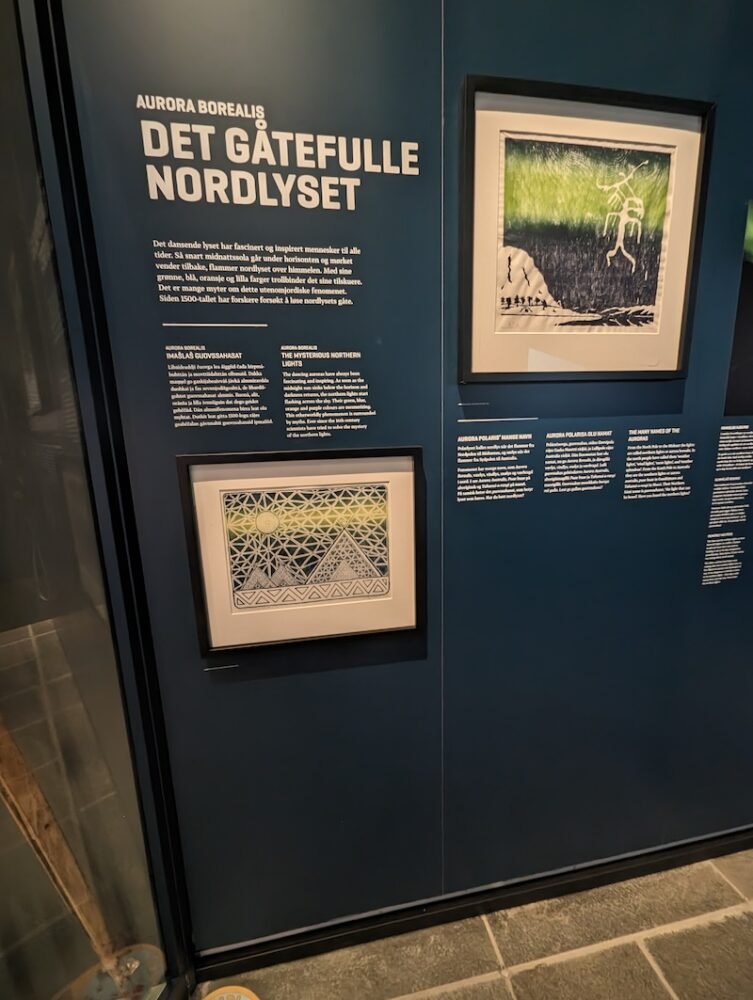
It’s one of the most well-executed museums of its kind that I’ve ever visited, and I definitely walked away from the museum with a far more complete understanding of the Finnmark region as a whole, as well as Alta’s specific history.
As a bonus, the museum café has one of the most scenic views in the entire city, where you can sip a cup of delicious coffee while admiring the snowy landscape and the fjord out of a ton of panoramic windows.
It might seem basic, but since most of the city is located inland as opposed to on the fjord like many Norwegian coastal towns, this is something quite special in Alta.
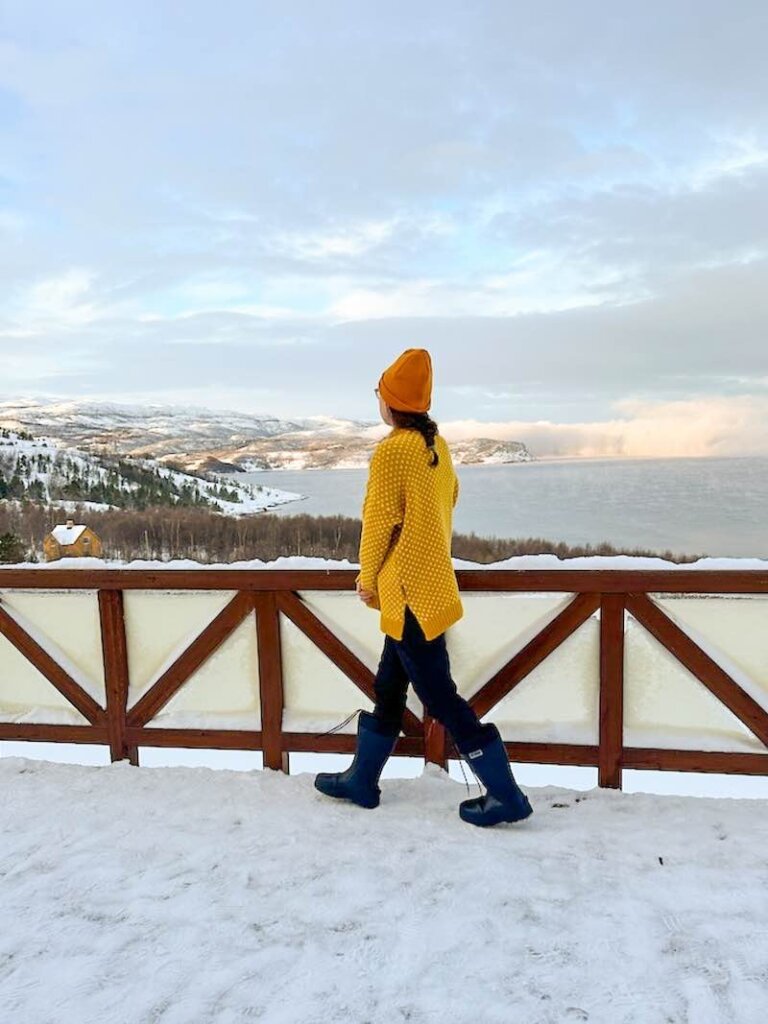
Their terrace area is particularly beautiful and it’s one of my favorite spots to photograph in Alta.
Admission in the winter is 100 NOK (about $9 USD), a savings compared to the summer price of 150 NOK because you cannot see the rock art now.
Discover the region’s salmon fishing history.
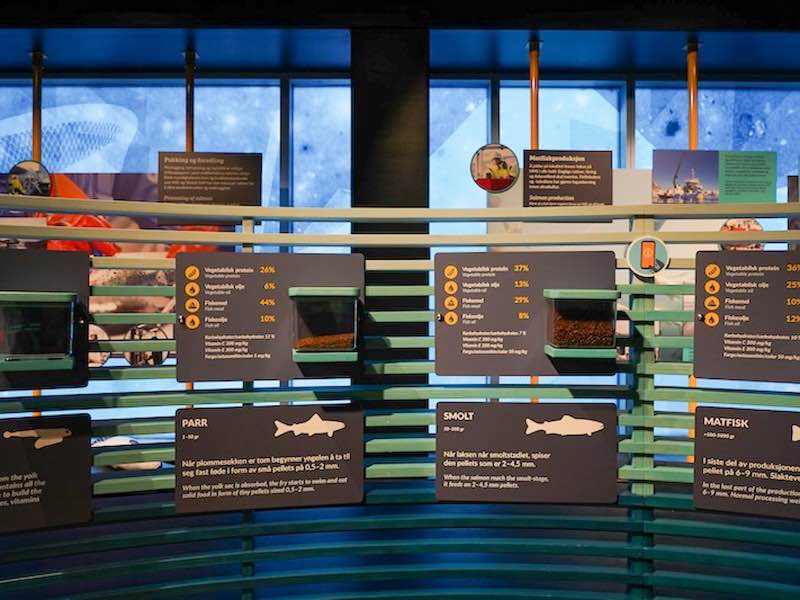
Another great place to visit in Alta to understand its history is the House of Salmon in the center of Alta, which tells the interesting story of salmon fishing and farming in Norway.
For example, did you know the Norwegian salmon industry is the reason why Japanese people eat salmon (sake) in their sushi? Traditionally, they never did, but Norway put on one hell of an ad campaign in Japan and now salmon sushi is extremely mainstream all over Japan.
Plus, it’s absolutely free to visit—and free is a highly valuable (and quite rare) word when it comes to touring expensive Norway!
Have a delicious meal (and meet the reindeer) at Sámi Siida.
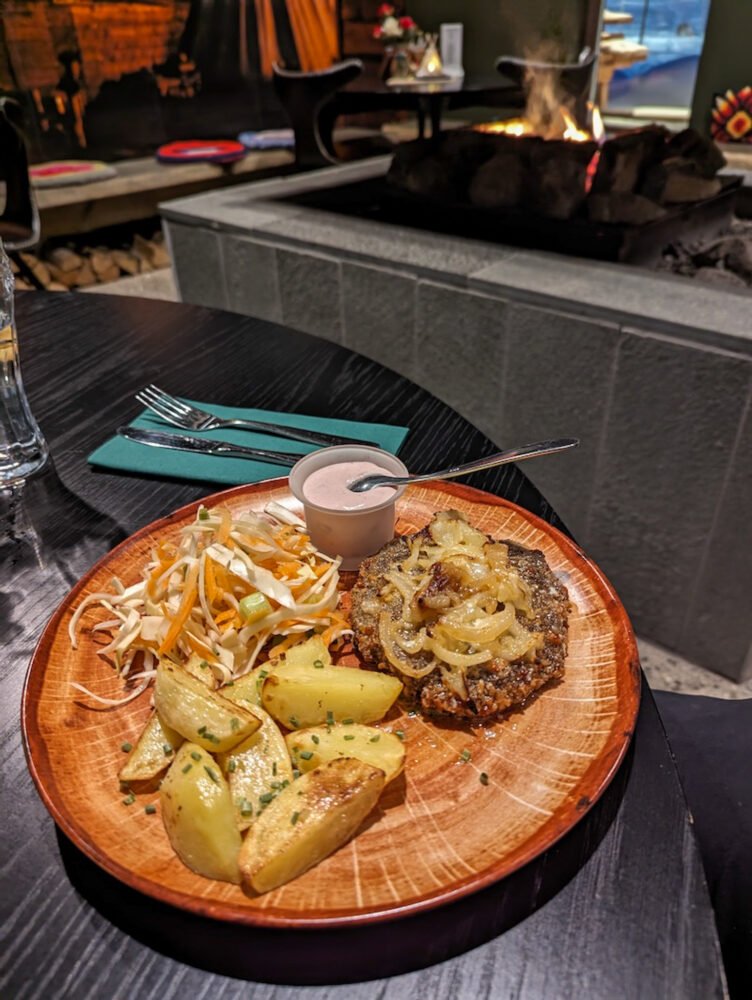
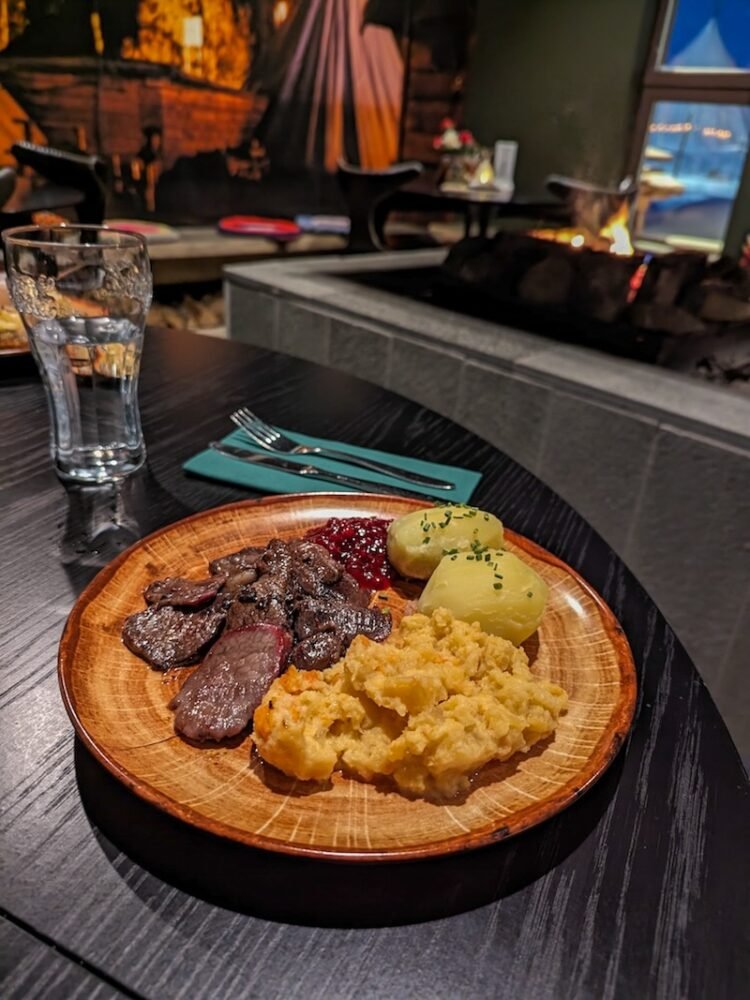
One of the places I enjoyed visiting most during my time in Alta was Sámi Siida, a casual-cozy restaurant serving up traditional Sámi dishes (think: tons and tons of reindeer). We had reindeer schnitzel and a smoked reindeer stew: both were fabulous.
If you prefer to meet, not eat, your reindeer, they also offer reindeer feeding and reindeer sledding experiences here, but I didn’t personally try either.
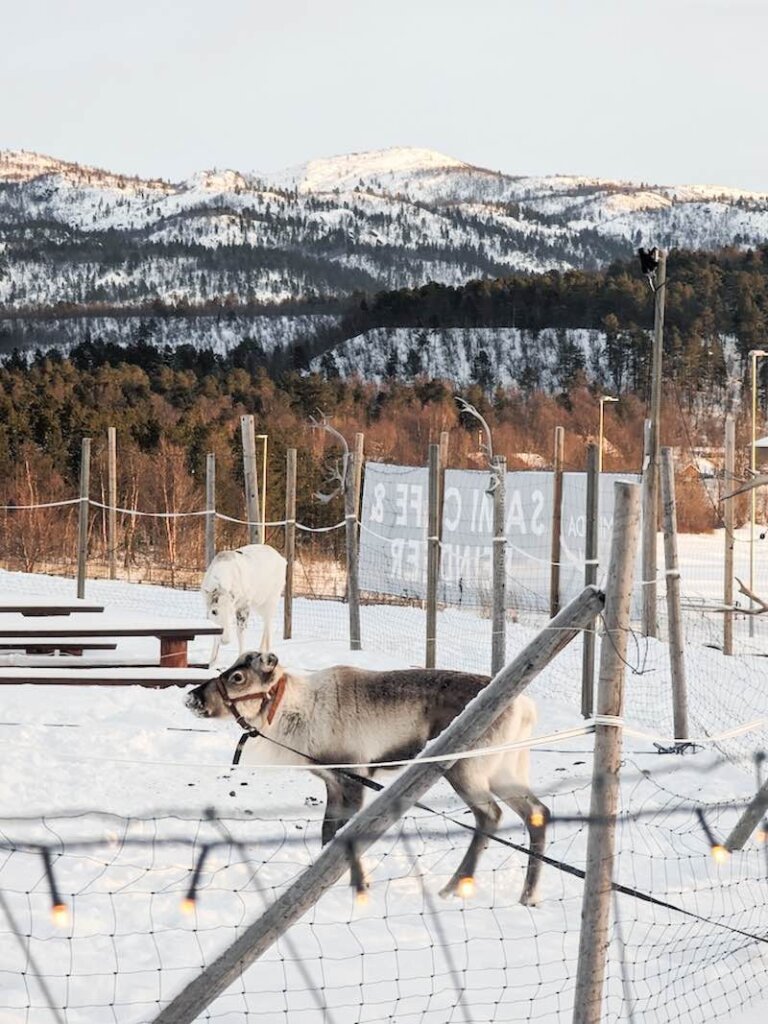
I strongly recommend that all visitors to Norway (and other parts of Lapland) learn about Sami culture (the Sami people are the indigenous people of the Arctic) to keep preserving this unique part of the North’s cultural heritage and ensure that tourism dollars are shared with the region’s original inhabitants.
This place is one of the best places in Alta to start (though I think that the reindeer experiences in Tromsø generally do a better job at educating people about Sámi culture, but a win is a win).
Catch a movie at the Aurora Kino.
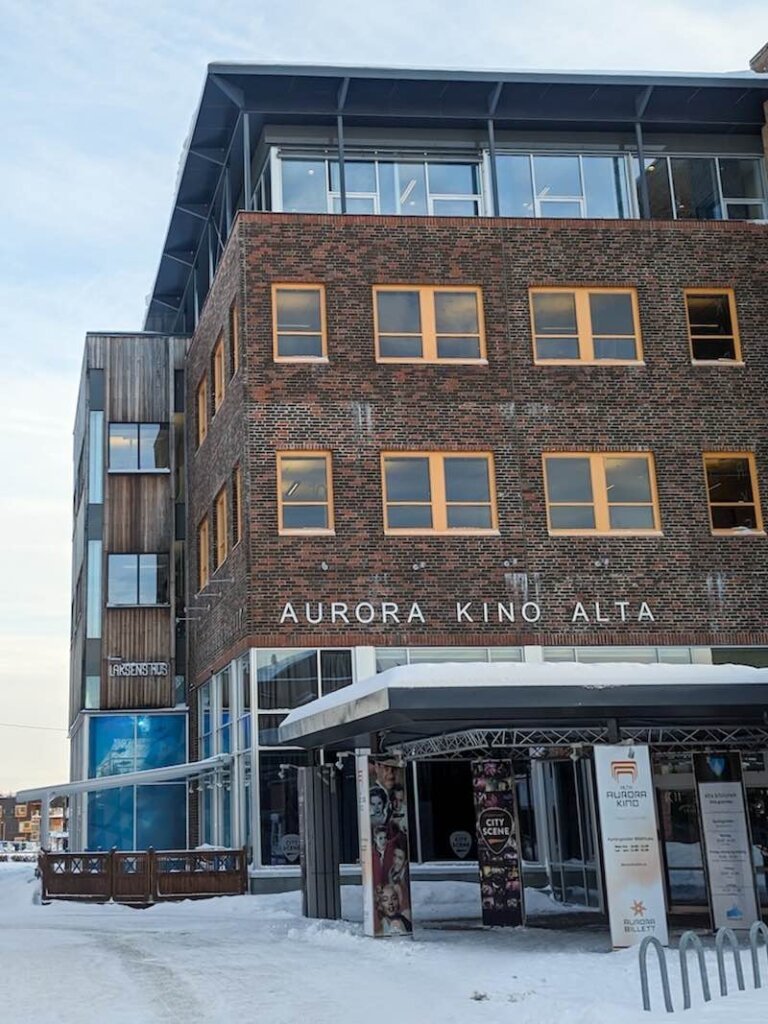
If you want to do something at night and the forecast looks way too crummy to have a shot at the Northern lights, it’s definitely a good idea to go for a movie night at the local movie house, Aurora Kino.
Generally they will play English language films subtitled in Norwegian or vice versa so it should be easy to find a film you understand — just ask beforehand to be sure.
Cozy up at the local library.
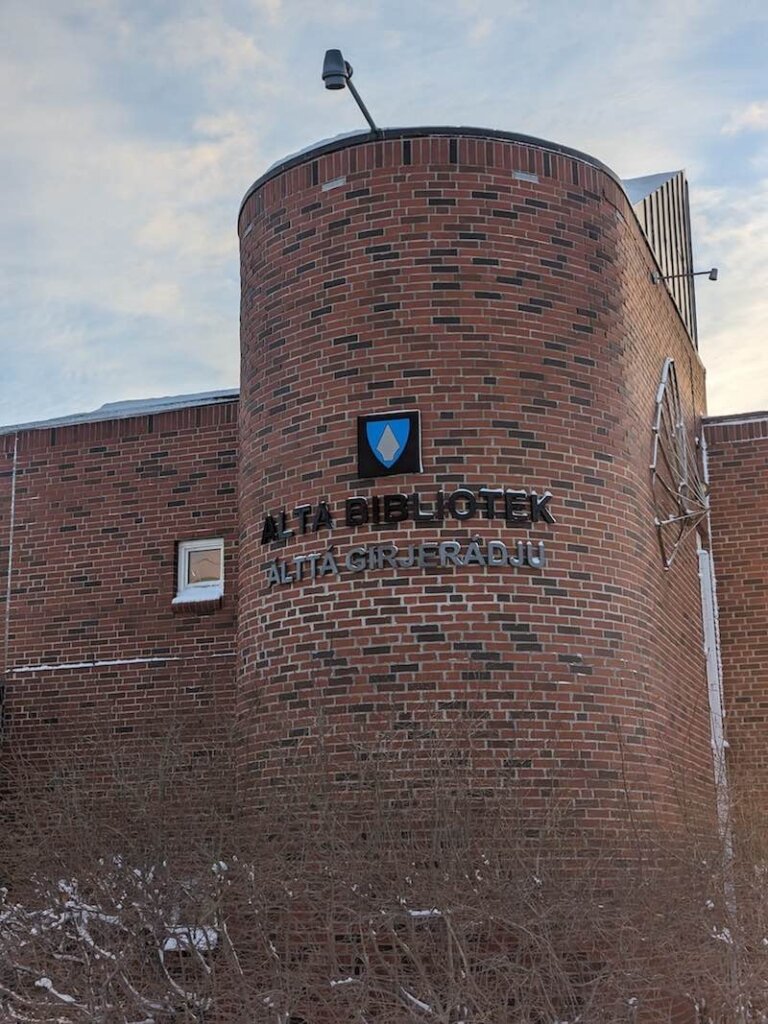
Looking for a free place to sit down for a while and warm up and just generally soak in the cozy Nordic vibes? The Alta Bibliotek (local library) is just the place to do that.
I fell in love with Norway’s libraries when visiting Tromsø last February and I ended up going almost every day to answer emails and just get some work done in a cozy, free environment.
Browse (or shop!) at Amfi.

One of the biggest shopping areas downtown is the Amfi Mall located right near the Thon Hotel as well as Markedsgata.
There’s all sorts of shops in here, from an H&M to a winter sports store to interior design store, as well as cafés you can stop at for a quick pick-me-up.
It’s a great place to while away a few cold hours in Alta between activities.
Allison Green is a former teacher who has been travel blogging since 2016. She has a Masters in Teaching and a B.A. in English and Creative Writing. Her blog posts merge her background as an educator with her experience traveling to 70+ countries to encourage ethical, meaningful travel. She has been a speaker at the World Travel Writers Conference and her writing, photography, and podcasting work has appeared in National Geographic, CNN Arabic, CBC Canada, and Forbes, amongst others. Now a full-time traveler, she has lived in Prague, Sofia, New York City, and the San Francisco Bay Area.
